Last Updated on February 23, 2024 by
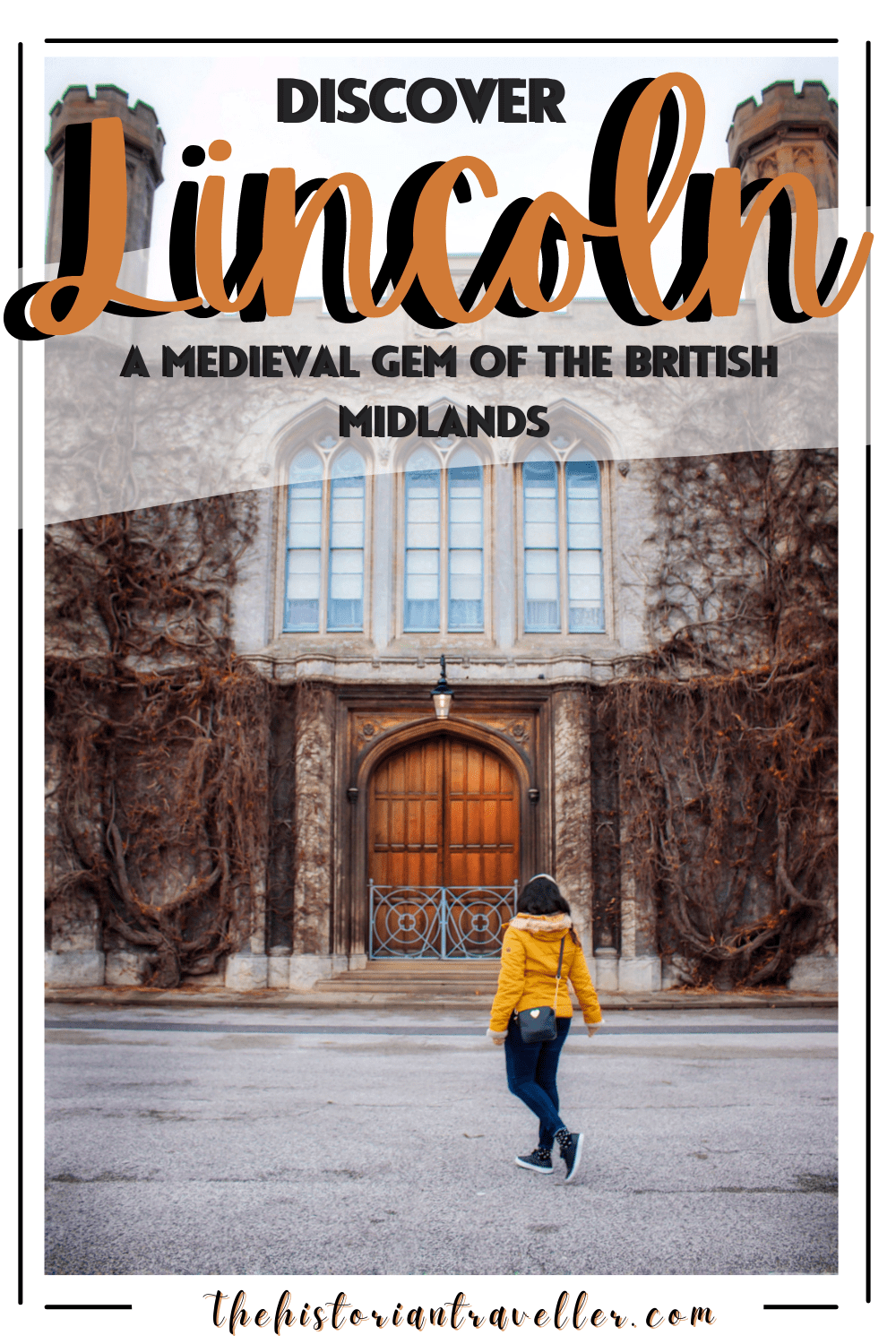
At less than 2 hours from London, the city of Lincoln is one of those medieval gems that should be on everyone’s bucket list of places to visit in England. Steeped in history and timeless architecture, Lincoln is perfect for a weekend gateway. In this blog, you will discover the best things to do in Lincoln. You will learn about its history and why is worth to plan here your next trip!
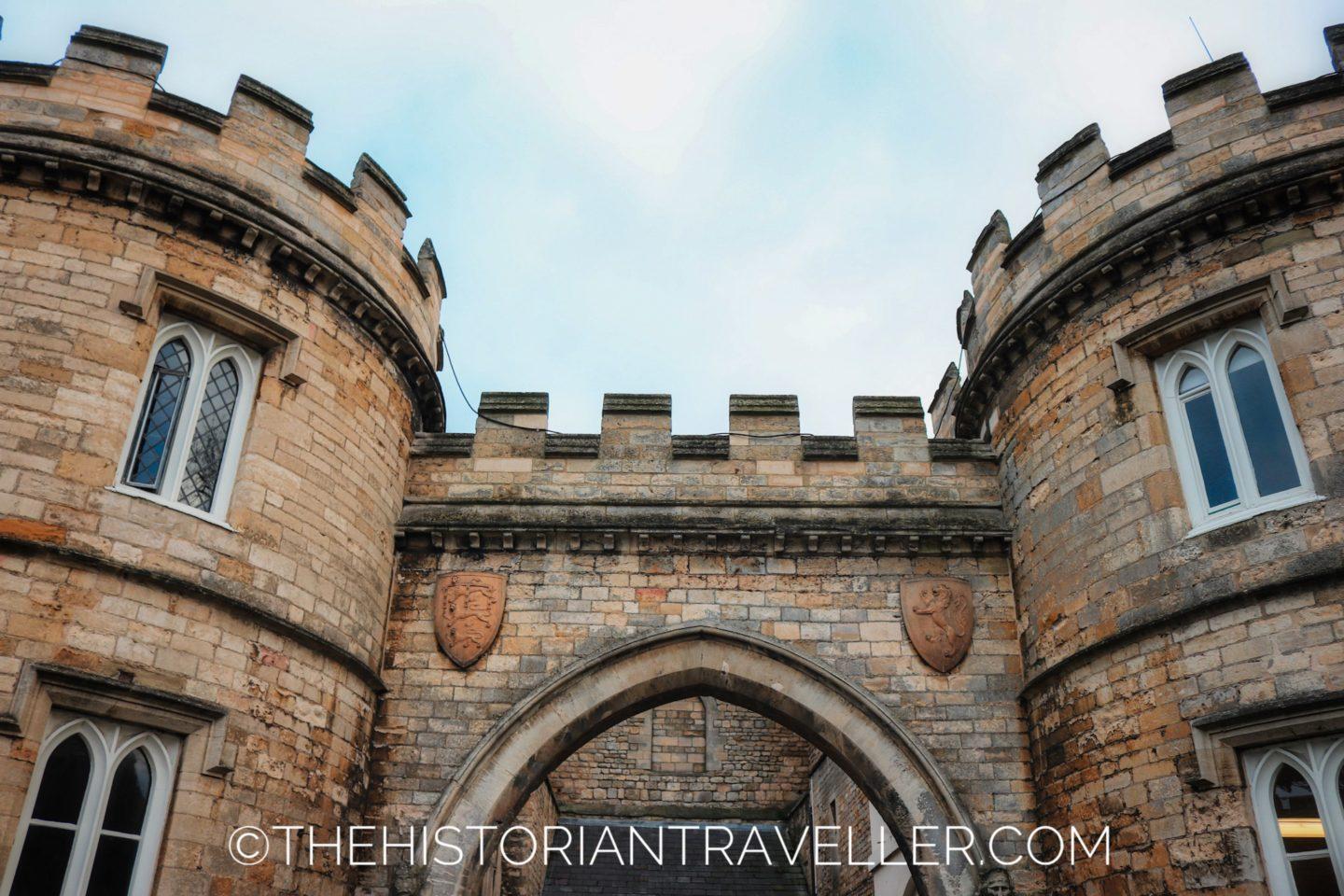
I am deeply affectionate to Lincoln. For a long time, it was a city I knew about only from my history books while studying medieval Britain. Then, I moved to the UK. Lincoln was one of the first cities I’ve visited while living in Nottingham. I always been fascinated by its historical importance. Seeing such place in reality exceeded my expectations both as a historian and as a tourist. So far, after more than 7 years living in the UK, Lincoln is still one of my favourite places. I’ve been here several times and I am happy to make you discover it!
Table of Contents
Where is Lincoln in the UK?
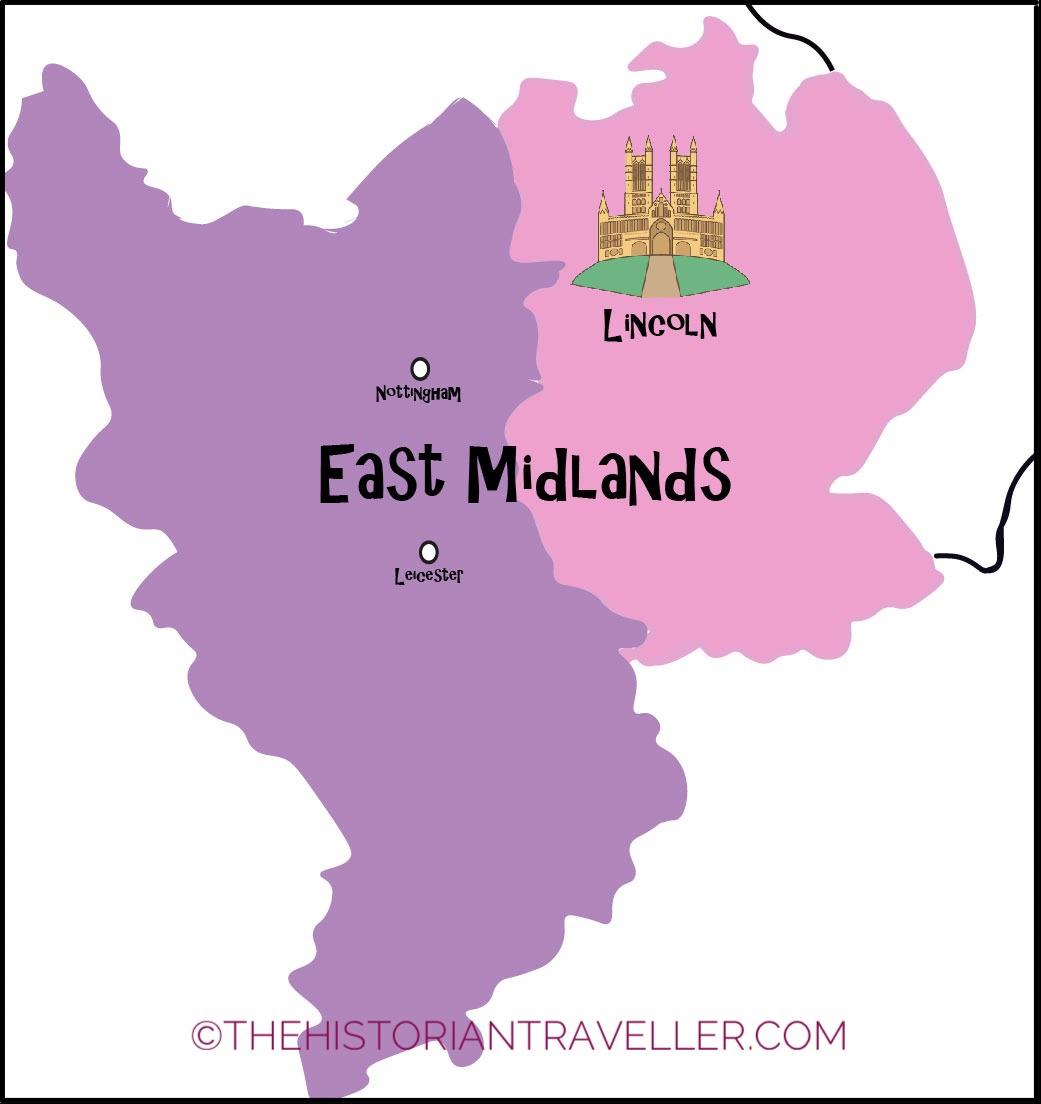
Lincoln is a city in the East Midlands. It’s very close to Nottingham. It’s located in between Cambridge and York in the Lincolnshire region, towards the east coast of England.
How to get to Lincoln
Lincoln is quite easy to reach from most parts of England. The city is well-connected through the M1, A46 and A15. In fact, it’s a just a 2 h trains from London, 50 minutes from Nottingham and about 1 h and a 40 minutes from Leeds.
If you are travelling by car, Lincoln is a 3 hours journey from London, 1 hour from Nottingham and 1 hour and a half from Leeds.
A bit of historical information about Lincoln
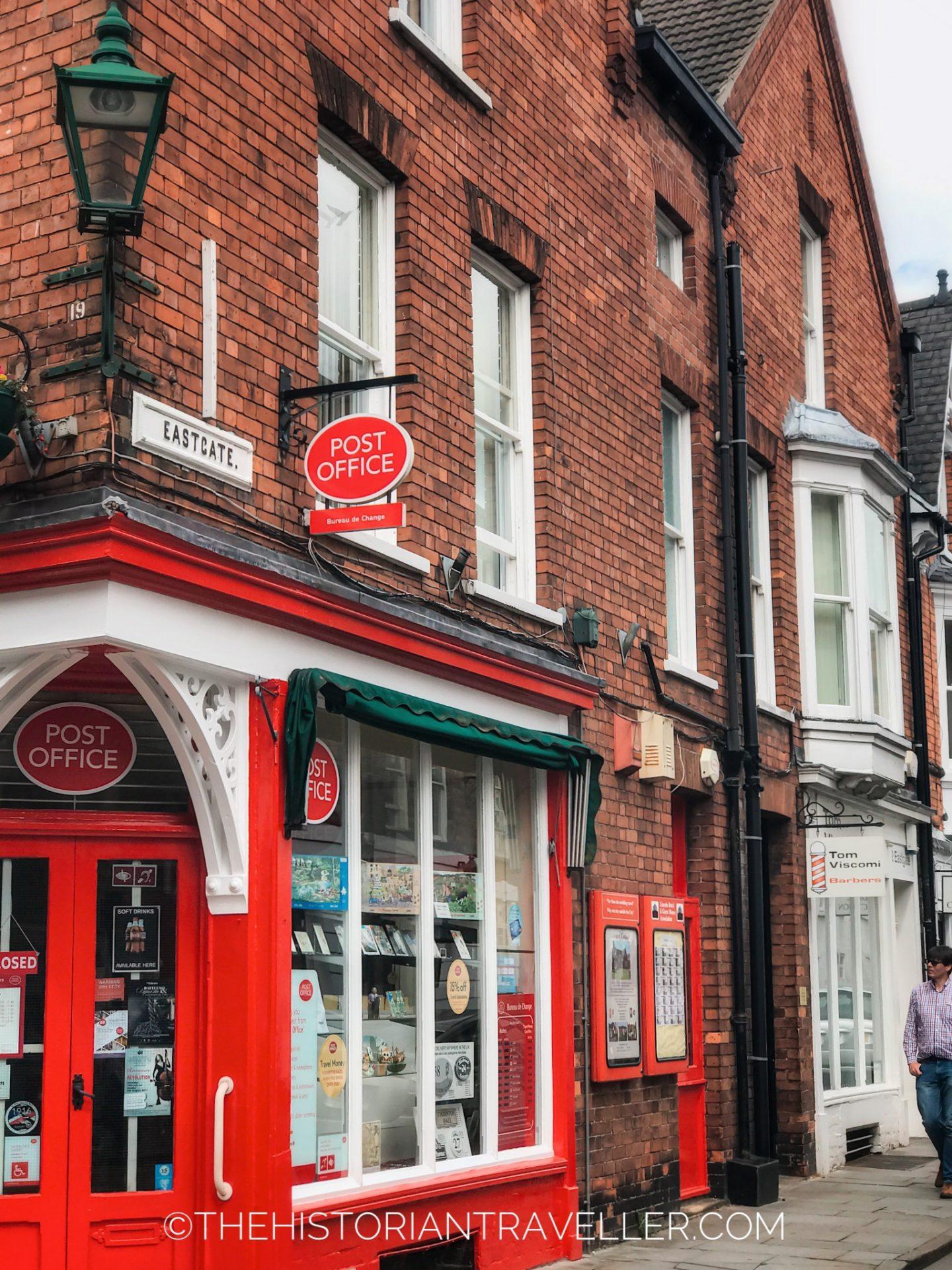
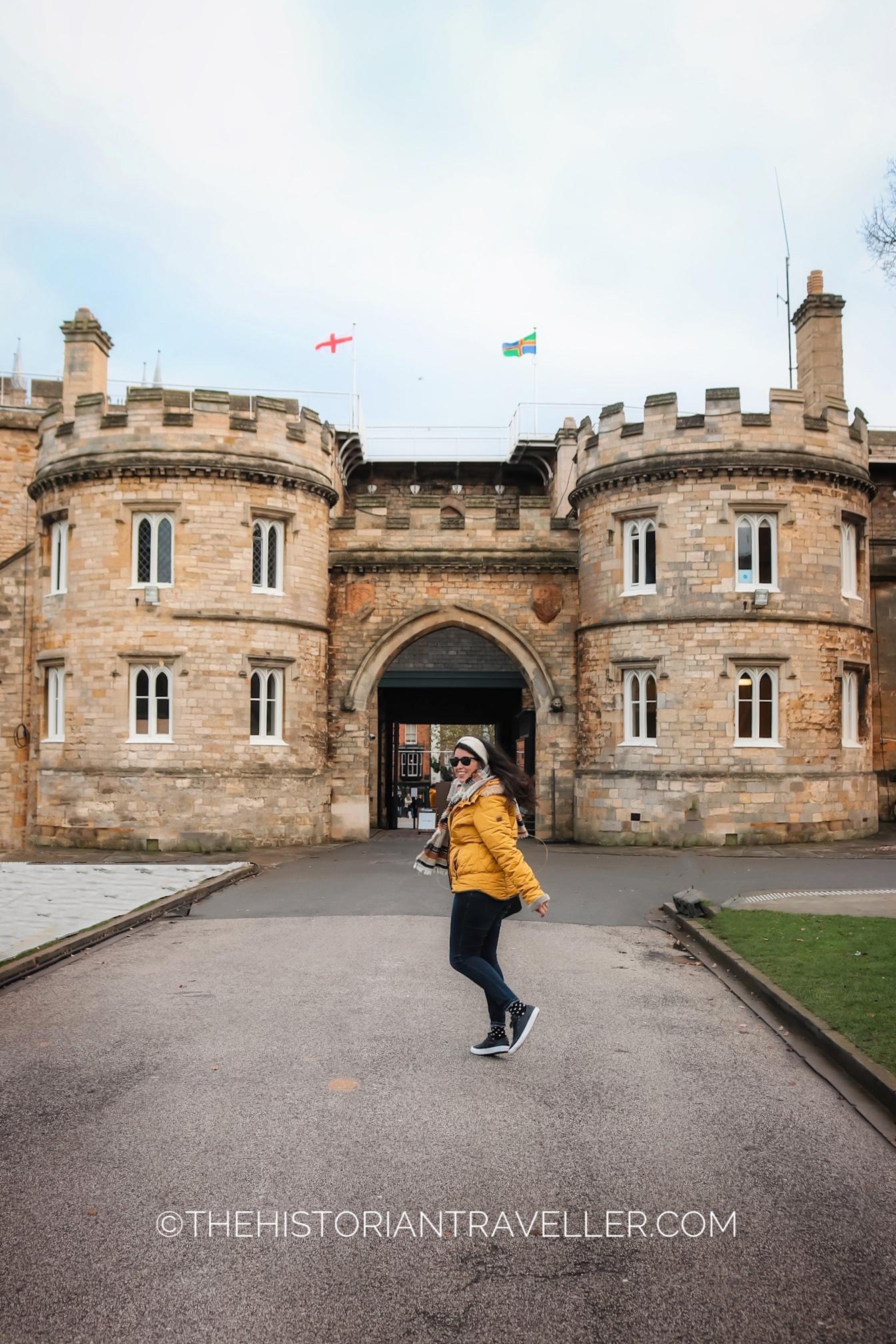
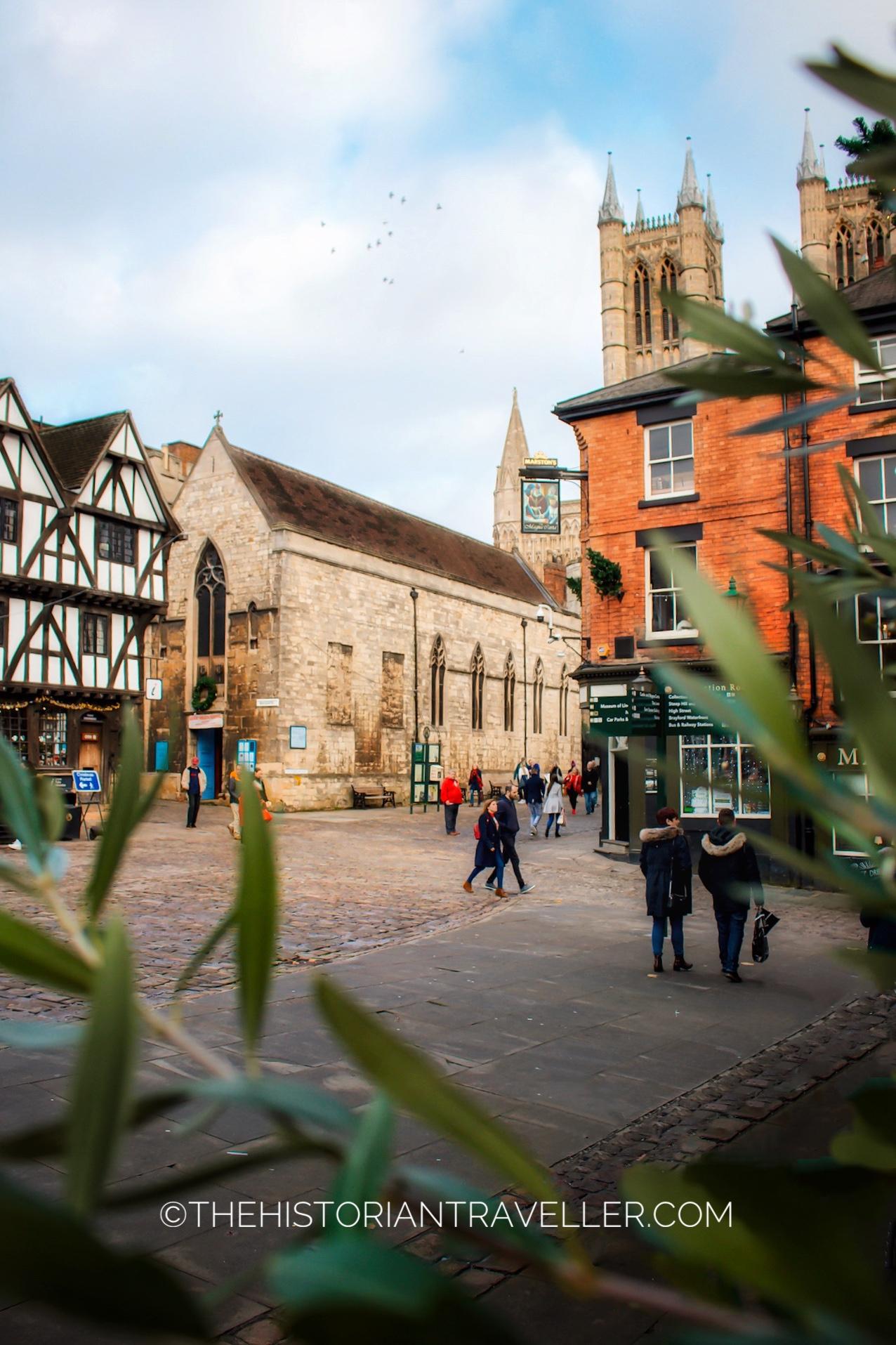
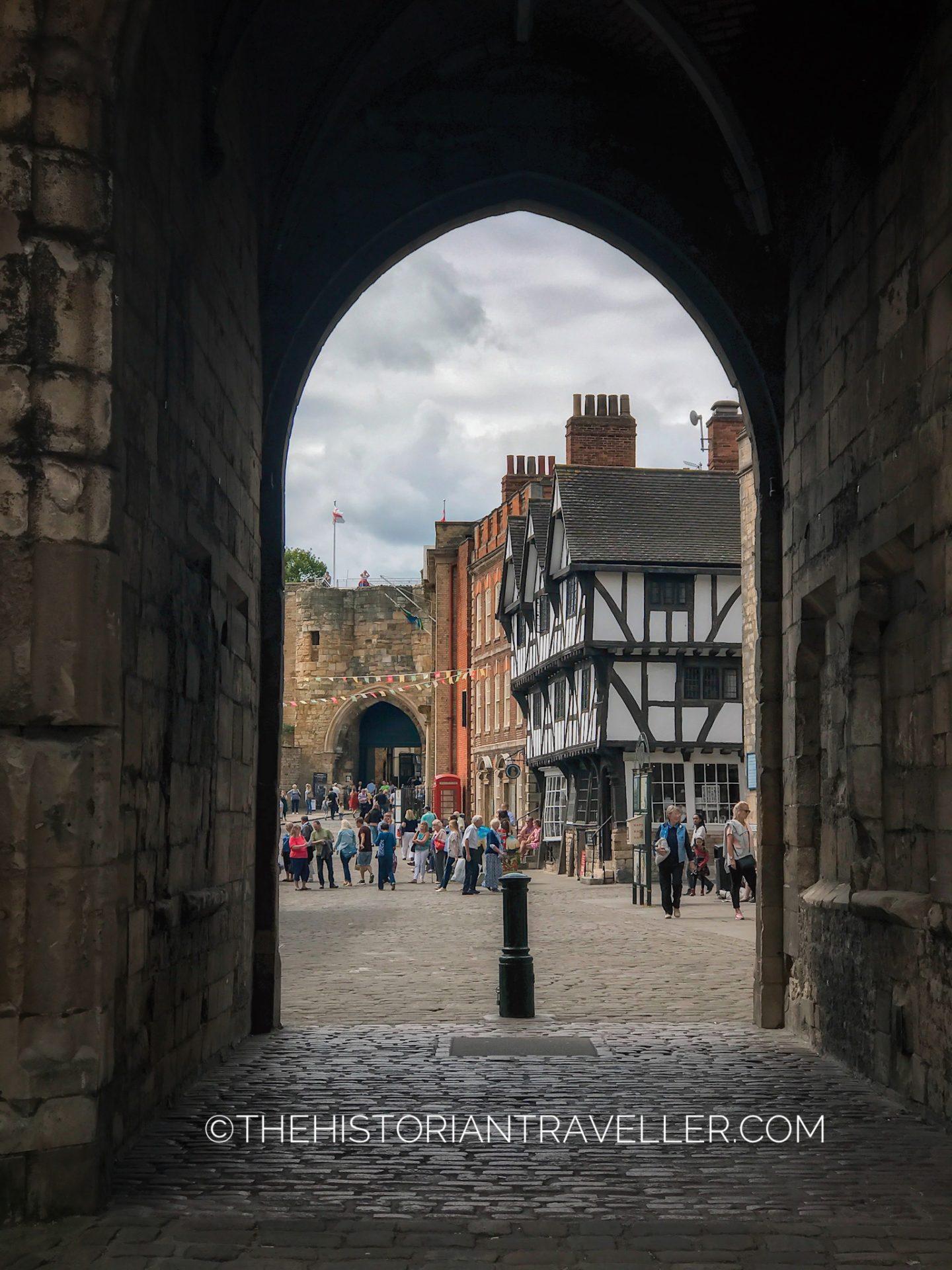
Born as “Lindon“, the city of Lincoln has an old and incredible history. Archaeologists traced the city’s origins back to the 1st century BC, when the city was built next to a deep pool in the River Witham. Nevertheless, despite some incredible archaeological findings, the real extent of the Iron Age Lincoln is still unknown. In fact, much of this early settlement still lies under the city’s roman ruins, medieval architecture and modern development.
Lindum Colonia
Not many people knows that Lincoln was an important Roman Fortress of which Latin name was Lindum Colonia. Indeed, Romans conquered this part of Britain around AD 48. Lindum was initially a simple fortress settlement but around AD 86 gained the title of “colonia”. Nevertheless, the date is still uncertain due to the lack of records and findings. However, historians and archaeologists agreed that this is the most plausible date.
The Lindum settlement was important for the Roman legionaries due to its hilltop position and the direct sea access from the rivers Trent and Witham. Roman temples, baths and an intricate sewerage system developed into Lindum. The Roman walls, that are still visible in part of the contemporary city, give you an idea of the great extent of Roman Lindum. Moreover, it is well-recorded that Lindum was an important centre for pottery production.
Unfortunately, due to a fragile socio-political situation, the Roman settlement declined by the 5th century when it changed name into Lindocolina and then to Lincylene.
Medieval Lincoln
A long-debated version of Lincoln’s history says that in the Post-Roman era, the Lindum site remained deserted until the arrival of the Vikings. Nevertheless, archaeological evidences suggest the city remained a centre of worship into the 6th century to became then part of the Kingdom of Lindsey during the Anglo-Saxon period. Records suggest also that around the 10th century, Lincoln was again a centre of great importance. In fact, it is recorded that the city had its own mint, fervid overseas trading ties and a population of 6,000 to 8,000 people.

Soon after the Norman Conquest of England, Willam I ordered the construction of the Lincoln Castle on the site of the former Roman fortress. The castle was completed probably around 1068. In this regard, this is still one of the only two surviving castle in the UK having two mottes. During the same age, sometime between 1072 and 1092, the Lincoln Cathedral was completed. It is said that around 1300 the Cathedral was the tallest building in the world. Indeed, its spire was 160 mt tall. Unfortunately, this collapsed in 1548 following a earthquake. By 1150, Lincoln was one of the richest town of England and third largest city by the thirteenth century.
The city hosted also one on the main Jewish communities in England. However, the fortune and prestige of medieval Lincoln seems to decline sometime after the 15th century. This decline was signed also by the dissolution of the monasteries in the 16th century and the lost of the region’s political power.
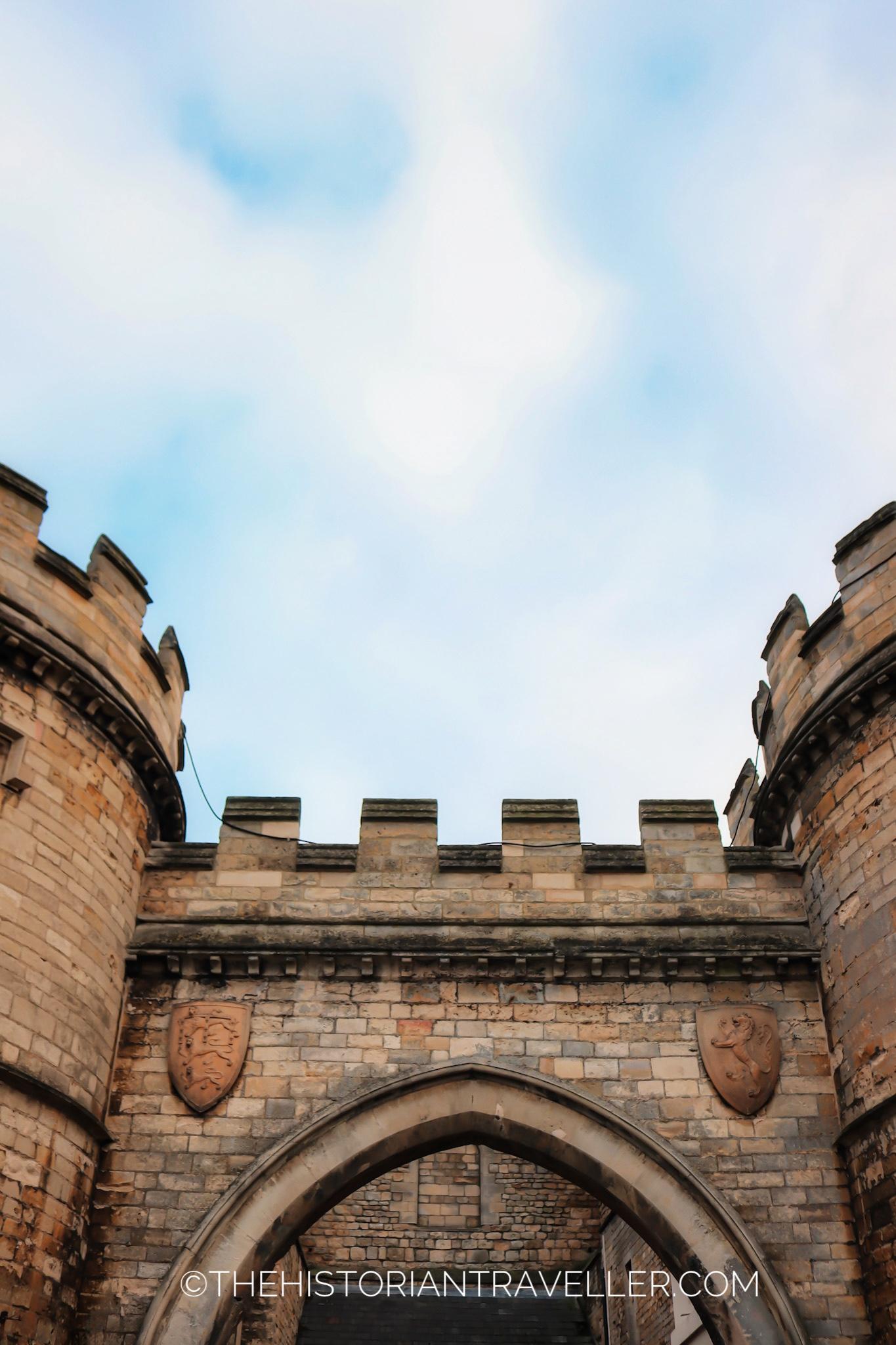

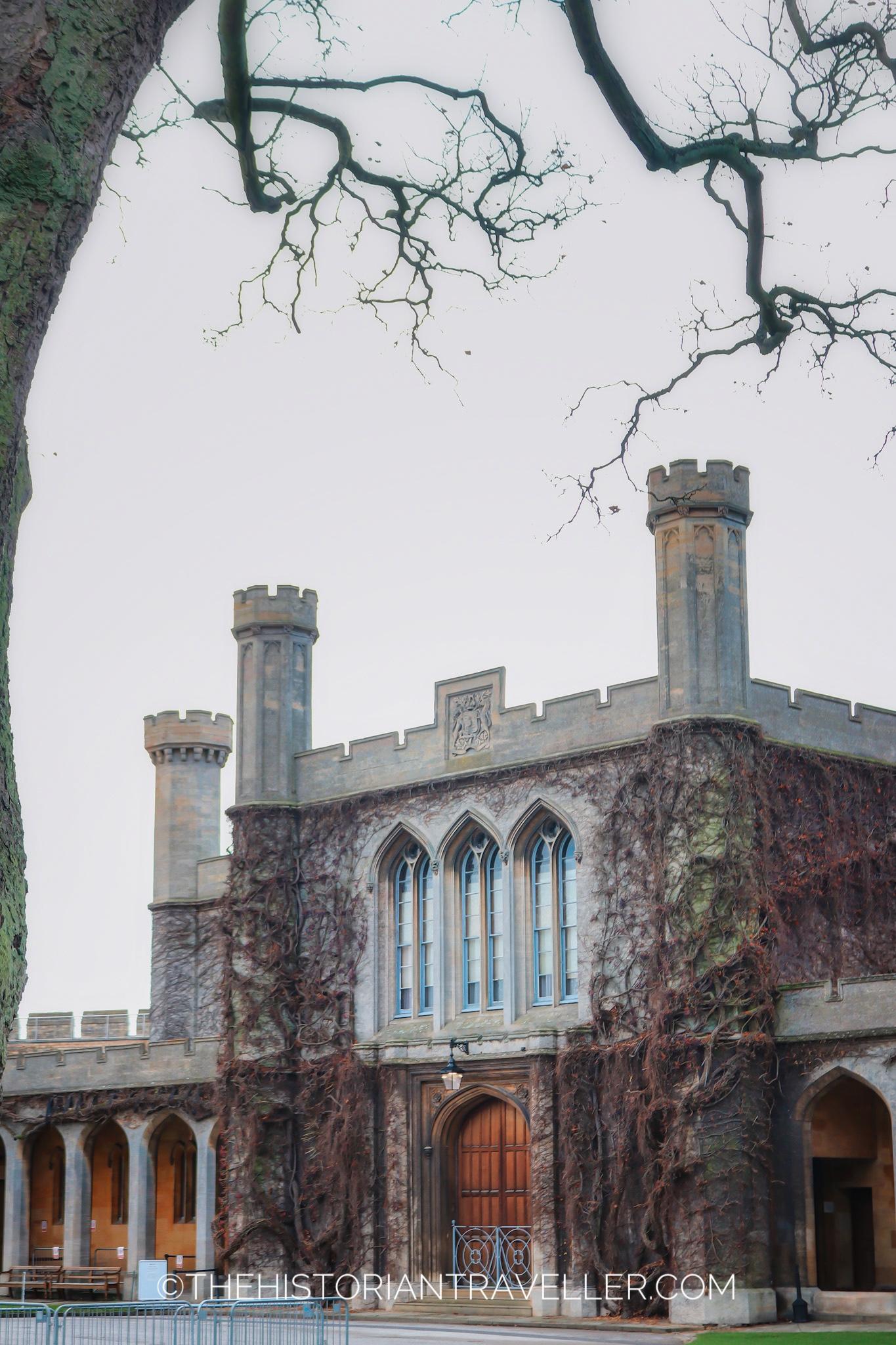
Industrial age and 20th century
After its decline in the 16th century, Lincoln prospered again two century after. By 1837 the city had a flourishing industrial environment that boomed with the Industrial Revolution. Indeed, Lincoln become an excellence in heavy engineering with many companies flourishing in the city.
During the two world wars, the city engaged in the production of war goods and military vehicles. Nevertheless, this industry declined at the end of the 20th century. Lincoln is now an important university city, proud of its heritage including several of the best preserved historical sites in England.
Best things to do in Lincoln
See an original copy of Magna Carta
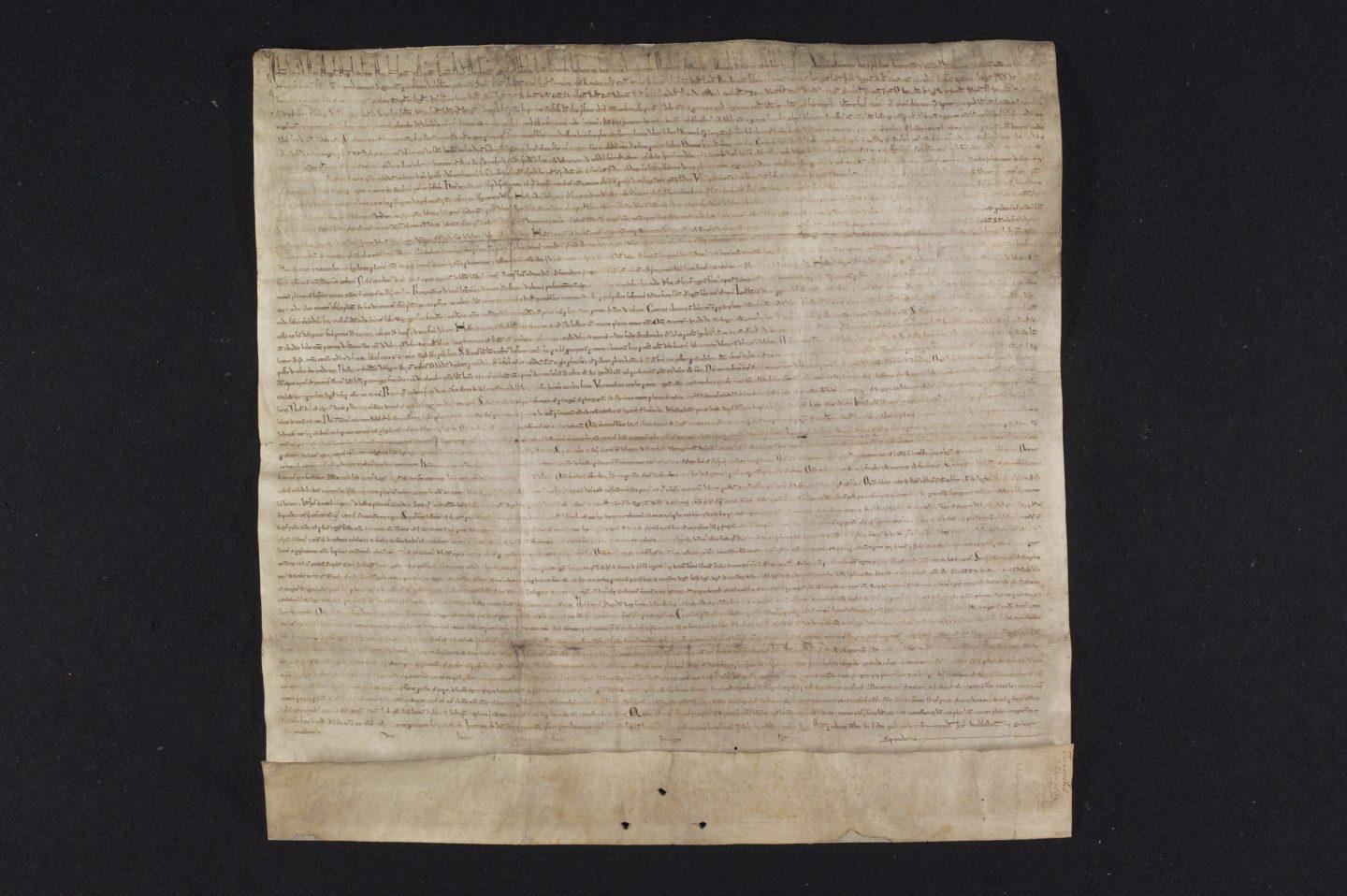
What is the Magna Carta?
The Magna Carta Libertatum or simply Magna Carta is one of the most famous documents of all times. To make an easy comparison for my American friends, is like the United States Declaration of Independence in terms of importance and influence not solely in the UK but in the world.
In fact, Magna Carta (translated as Great Charter of Freedoms) stands at the base of the constitutional law across the globe as we know it today. Signed in 1215 at Runnymede (Windsor) by, a not-very-happy, King John it established the universal principle that everyone is subject to the law, even the king. This document guaranteed the rights of individuals, the right of justice and a fair trial with a jury.
What is the Magna Carta legacy?

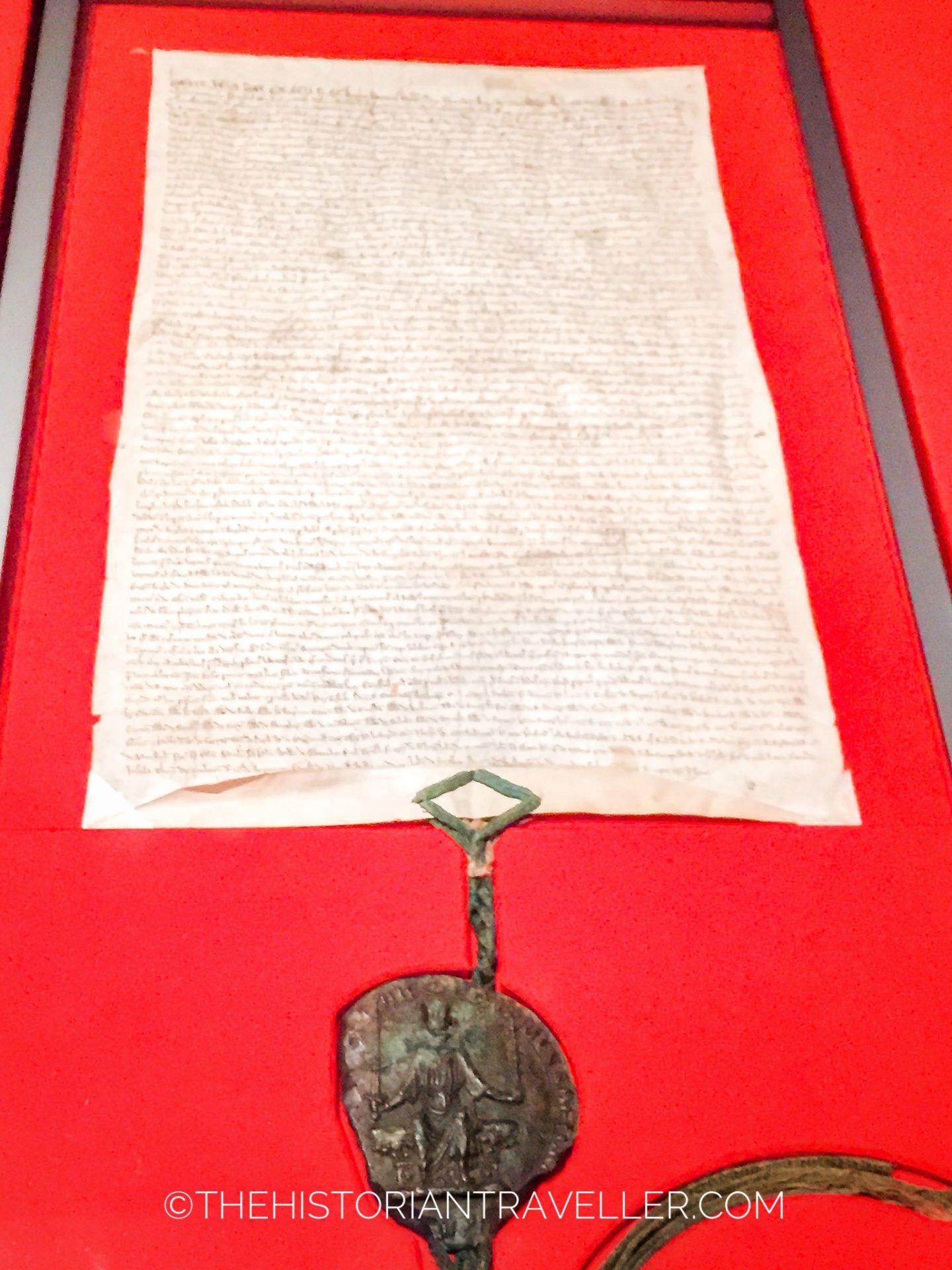
Magna Carta has always been described by historians as one of the most powerful documents ever written. Indeed, its legacy is still contemporary and it was used as a symbol of freedom by important worldwide leaders such as Nelson Mandela or Gandhi. Moreover, the most important legacy of Magna Carta was perhaps on the Universal Declaration of Human Rights (1948). Lastly, 3 of the original clauses of Magna Carta are still part of the British Law.
As the Magna Carta subject is very long and complex, if you are interested to know more, I warmly recommend you to read the very detailed files of the British Library about Magna Carta history and its modern legacy.
The Magna Carta at Lincoln Castle
When the first version of Magna Carta was signed off in 1215, there wasn’t just one copy. In fact, multiple copies of the document were produced and distributed in England. Of these “original copies” only four remain in existence. Two of them are at the British Library, one of them at Lincoln Castle an one at the Salisbury Cathedral.
The copy at Lincoln Castle was the one Winston Churchill wanted to gift to the USA for its support during the WWII. In this regard, the document remained guarded at Fort Knox until 1946, after its exhibition at the New York’s World Fair in 1939. Nevertheless, Churchill proposal was rejected as it was established the Magna Carta was not government’s to give away.
Today, people can see Magna Carta displayed at the David P J Ross Magna Carta vault at the Lincoln Castle. Unfortunately, you can’t take pictures of the vault but it’s worth a visit. Particularly if you are a history passionate.
Entry fees and Opening times
The Magna Carta vault visit is included in the general Lincoln Castle ticket. This cost £16,00 (Adult price). Because of Covid restrictions there is a timed entry for the vault that should be booked when buying the ticket. You can book your tickets online here.
The castle opening times are
1st April 2023 to 29th October 2023
10.00am to 5.00pm
30th October 2023 to 28th March 2024
10.00am to 4.00pm
Walk the Medieval walls of the Lincoln Castle
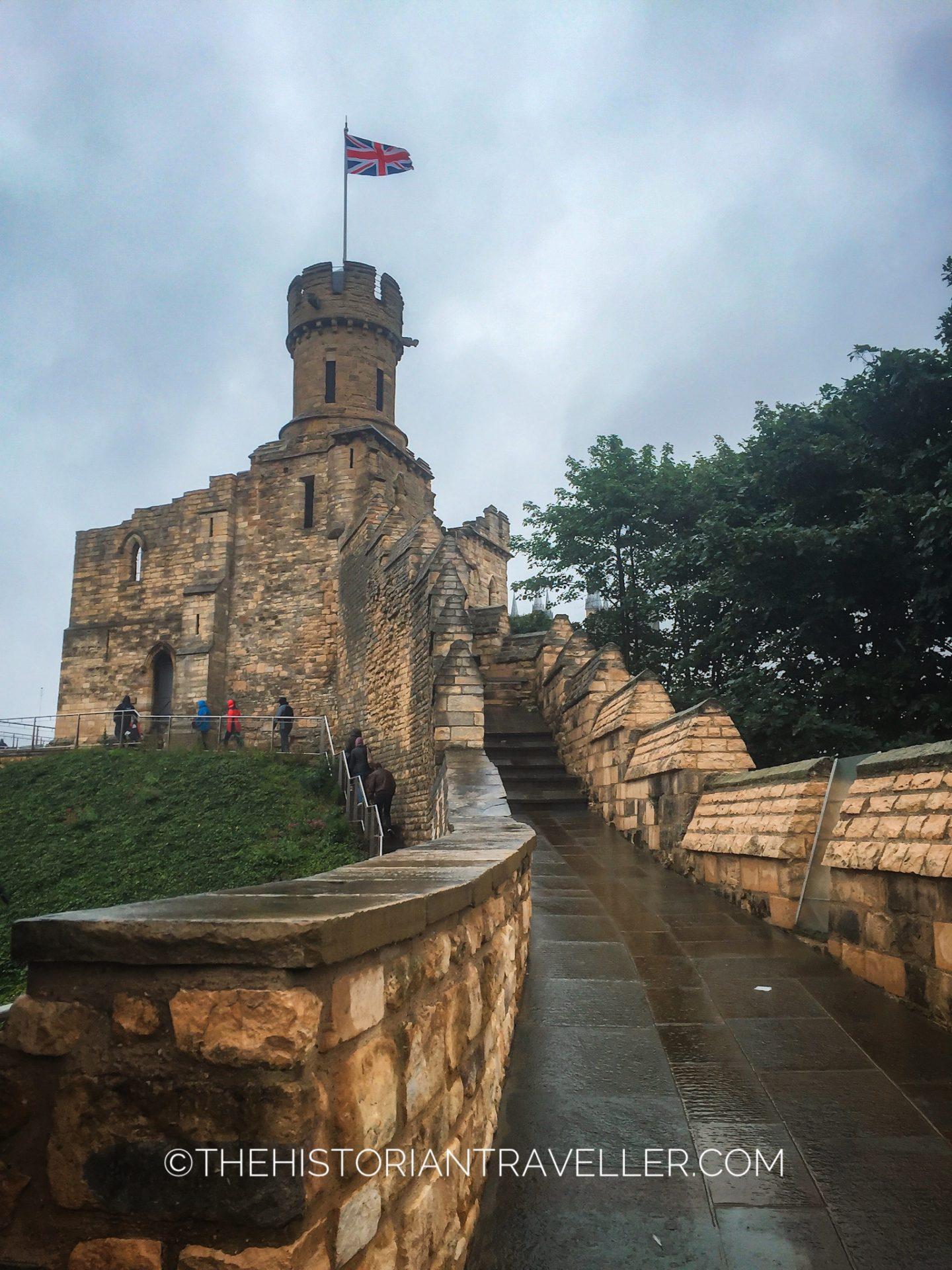
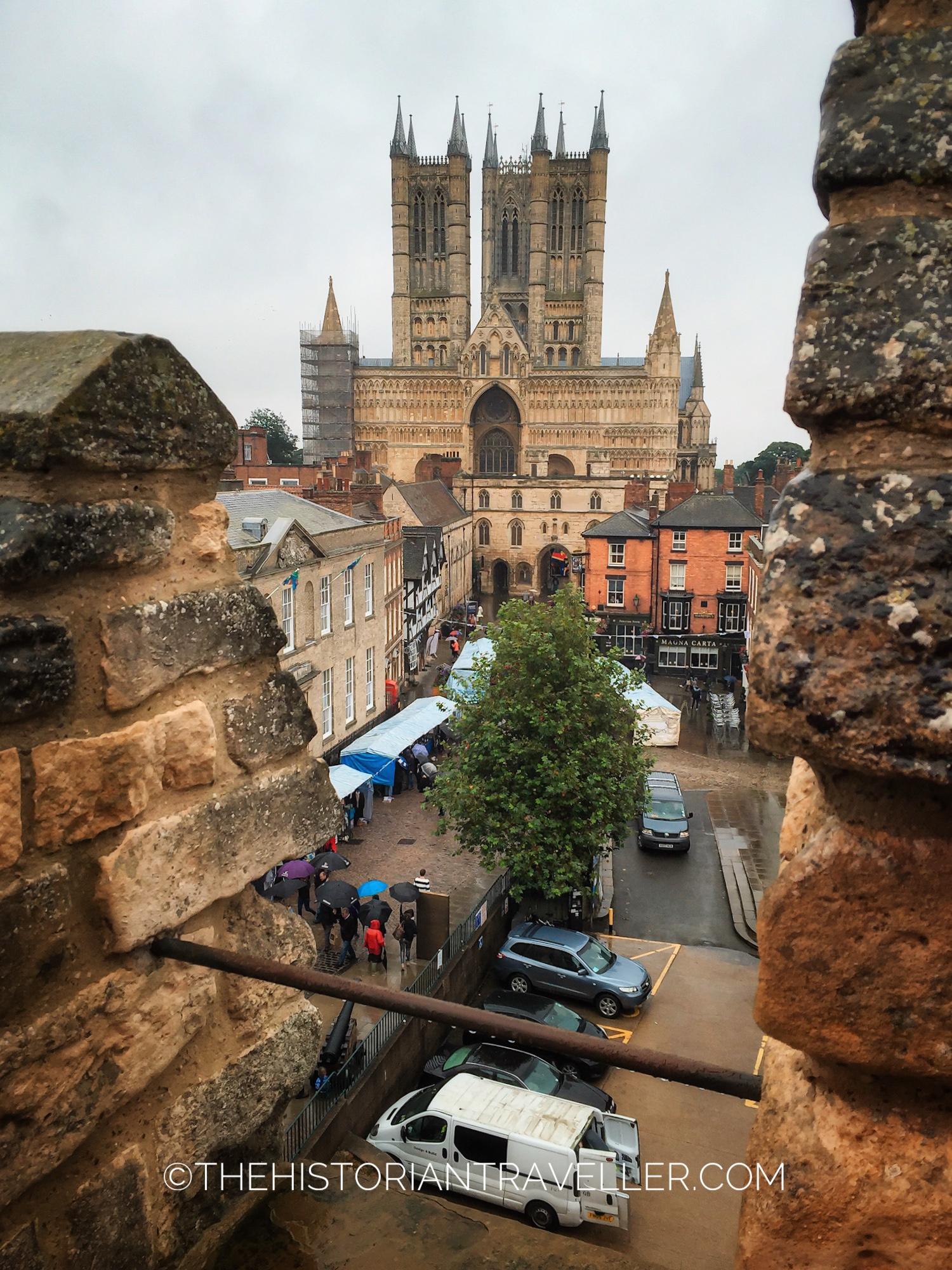
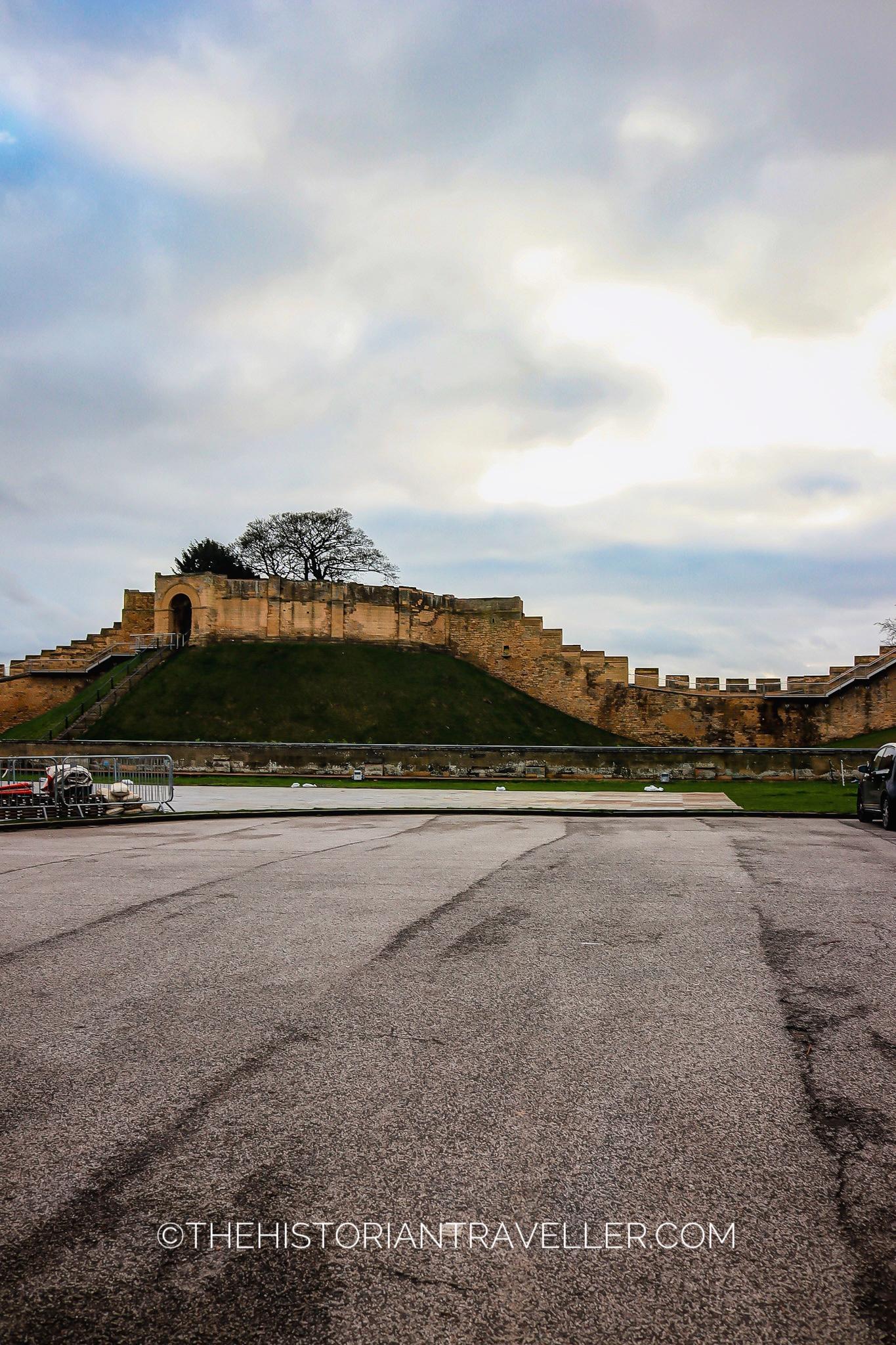
There is no better view point on the city that Lincoln medieval castle’s walls. These stretch in circular for the whole castle estate and offer a 360° view on Lincoln surroundings. Particularly relevant is the spectacular view on the Cathedral. I have to say that the castle wall walk is one of my favourite things to do in Lincoln!
Along the medieval walls route you will find also some nice landmarks that will make you discovery the history of the castle and the city. Among these: the dungeons of Cobb Hall, the beautiful views from the Observation Tower and the unfortunate grounds of the Lucy Tower. This was lately used as burial ground for prisoners hanged at the castle.
Entry fee and opening times
The entry fee for the medieval wall walk is £11 (adult price). You can buy the ticket here.
The walls opening times are
1st April 2023 to 29th October 2023
10.00am to 5.00pm
30th October 2023 to 28th March 2024
10.00am to 4.00pm
Visit the Victorian Prison
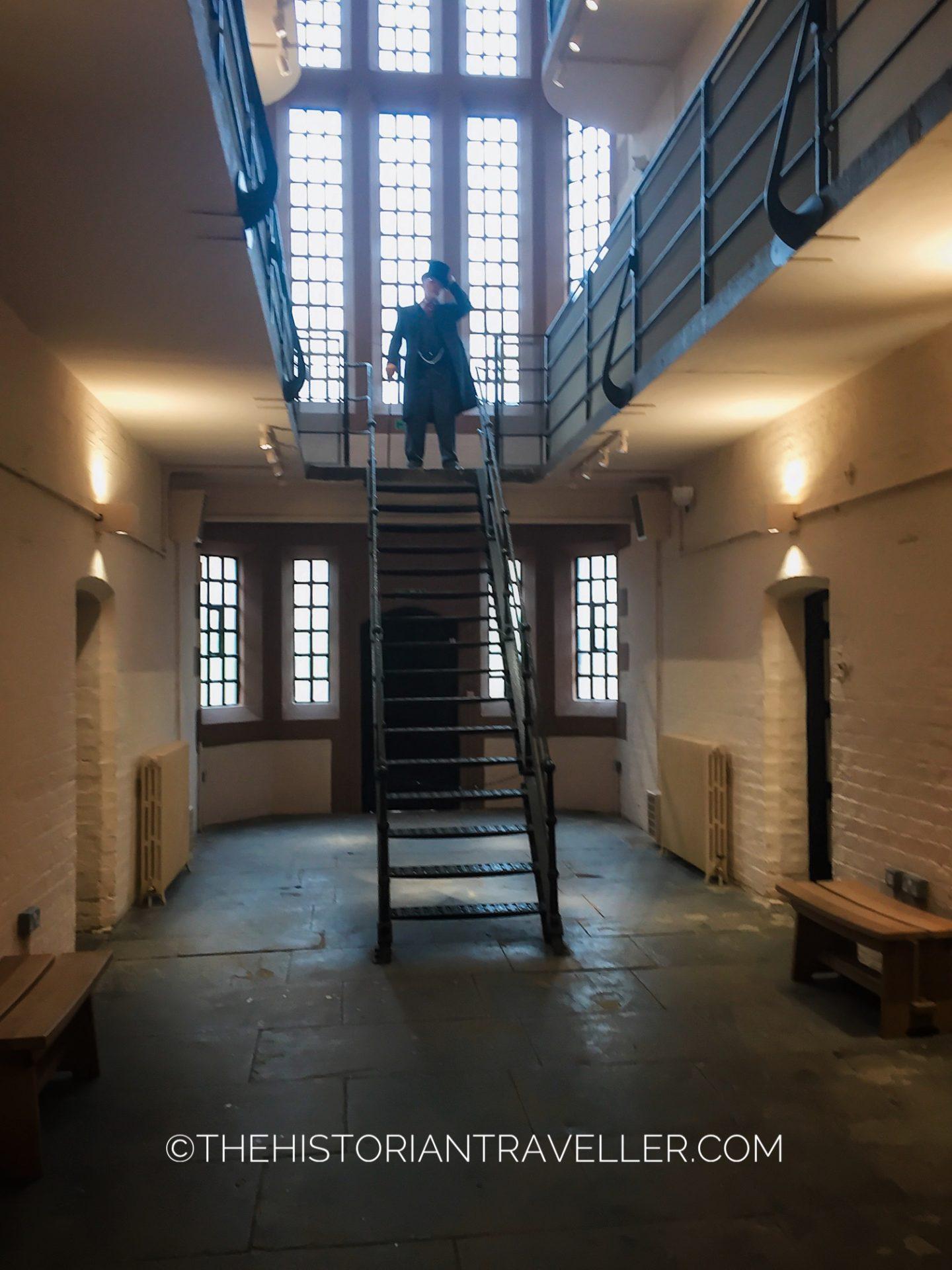
The Victorian Prison is an integral part of the Lincoln Castle. Already in 1788, the Castle hosted a gaol used to hold those accused of a wide range of crimes or awaiting trials. Between 1847-48, the wings that used to accommodated serious offenders were demolished in favour of a new prison implementing the “separate system”.
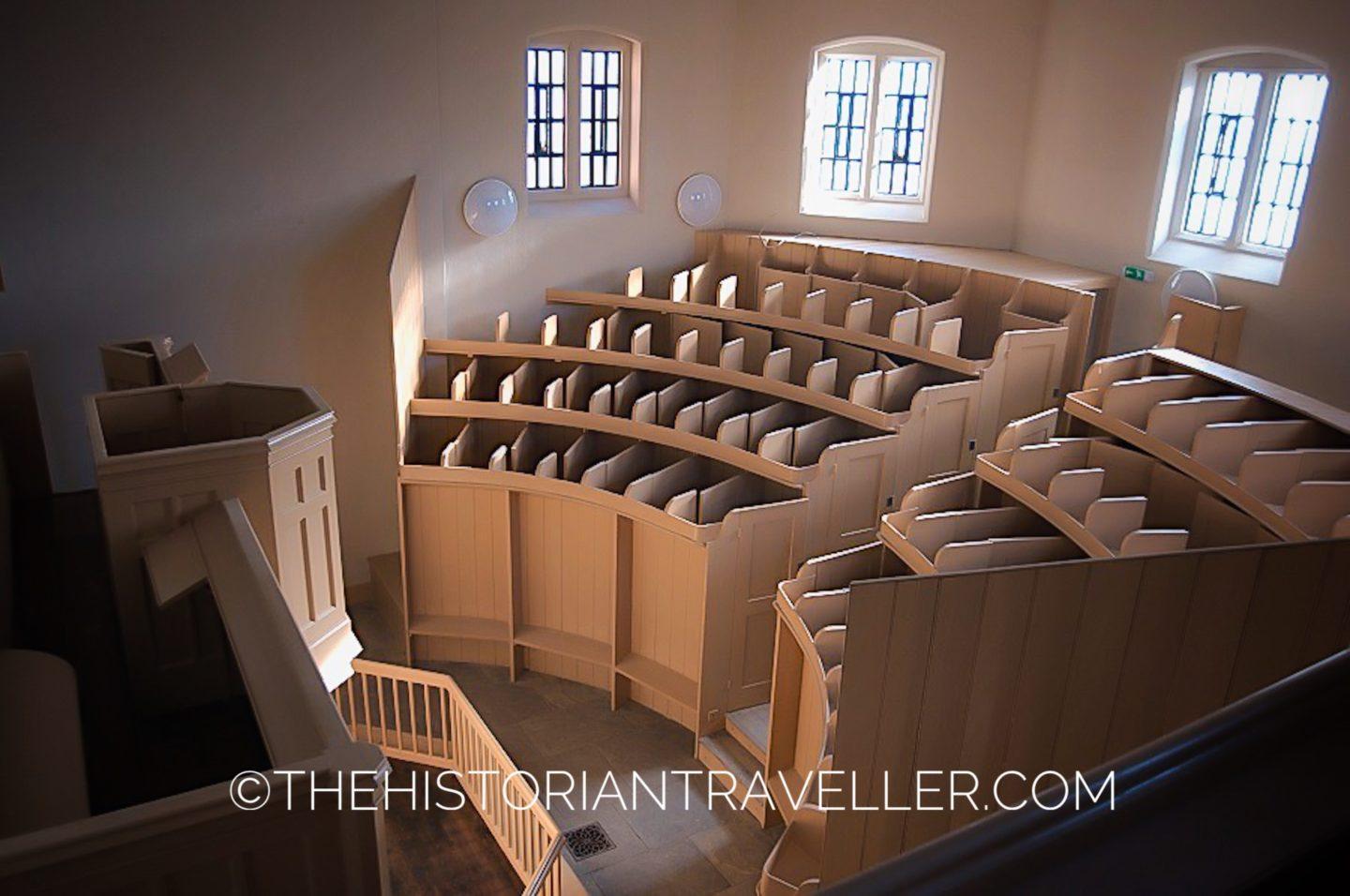
People of the Victorian age believed this type of isolation system would help prisoners to reflect on their crimes and stay away from the corrupting influence of other fellows. Nevertheless, Victorian prisons never been fully effective in their intent. Therefore, as many others around England, also this prison was closed in 1878.
After a careful restoration, it is now possible to visit all the wings of the building, including the unique separate system chapel. This is said to be the last surviving chapel of this type in the world.
Entry fee and opening times
Entrance to the Victorian prison is included in the general ticket to the Castle.
The Victorian prison opening times are
1st April 2023 to 29th October 2023
10.00am to 5.00pm
30th October 2023 to 28th March 2024
10.00am to 4.00pm
Get enchanted by the Lincoln Cathedral
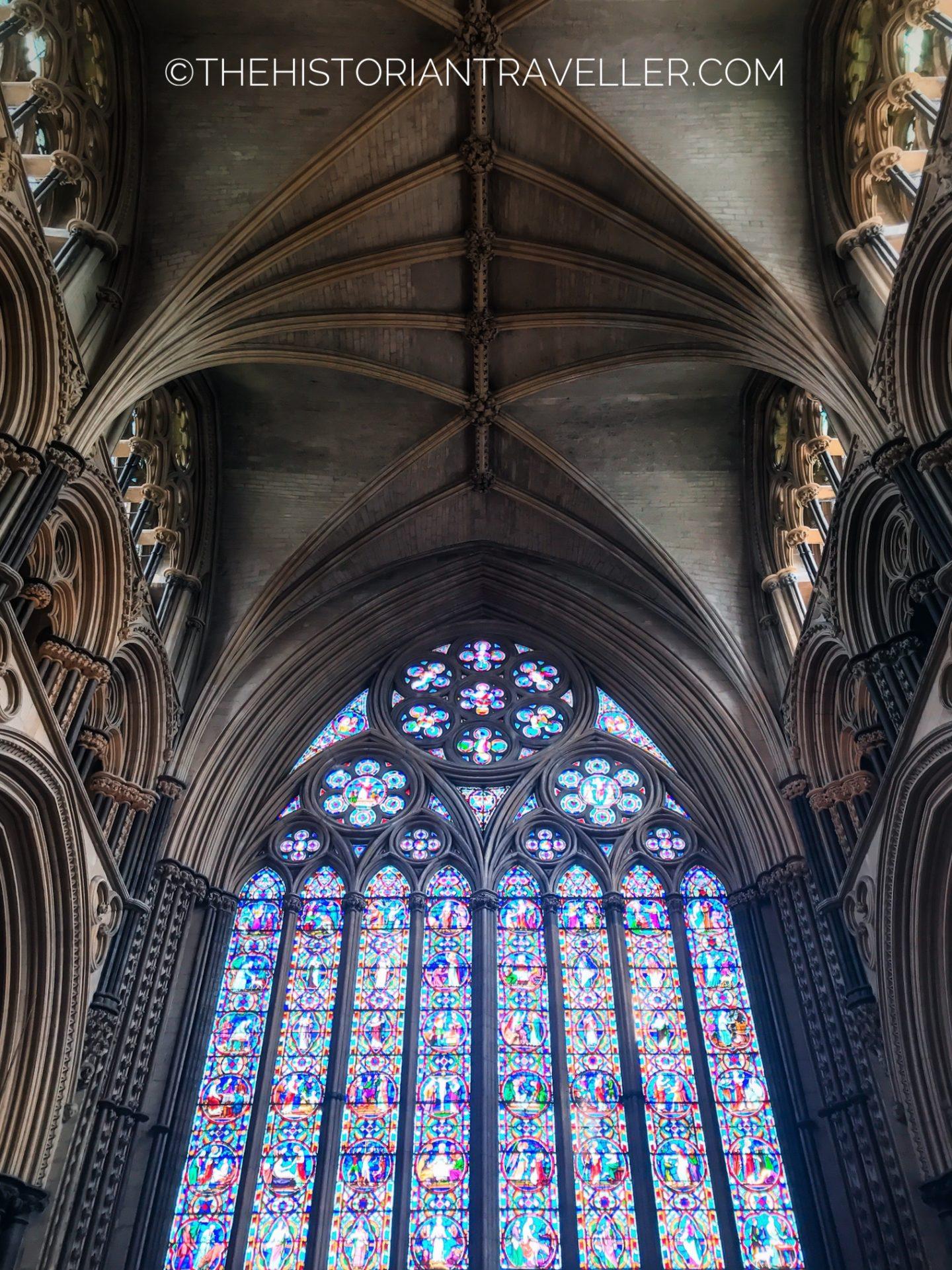
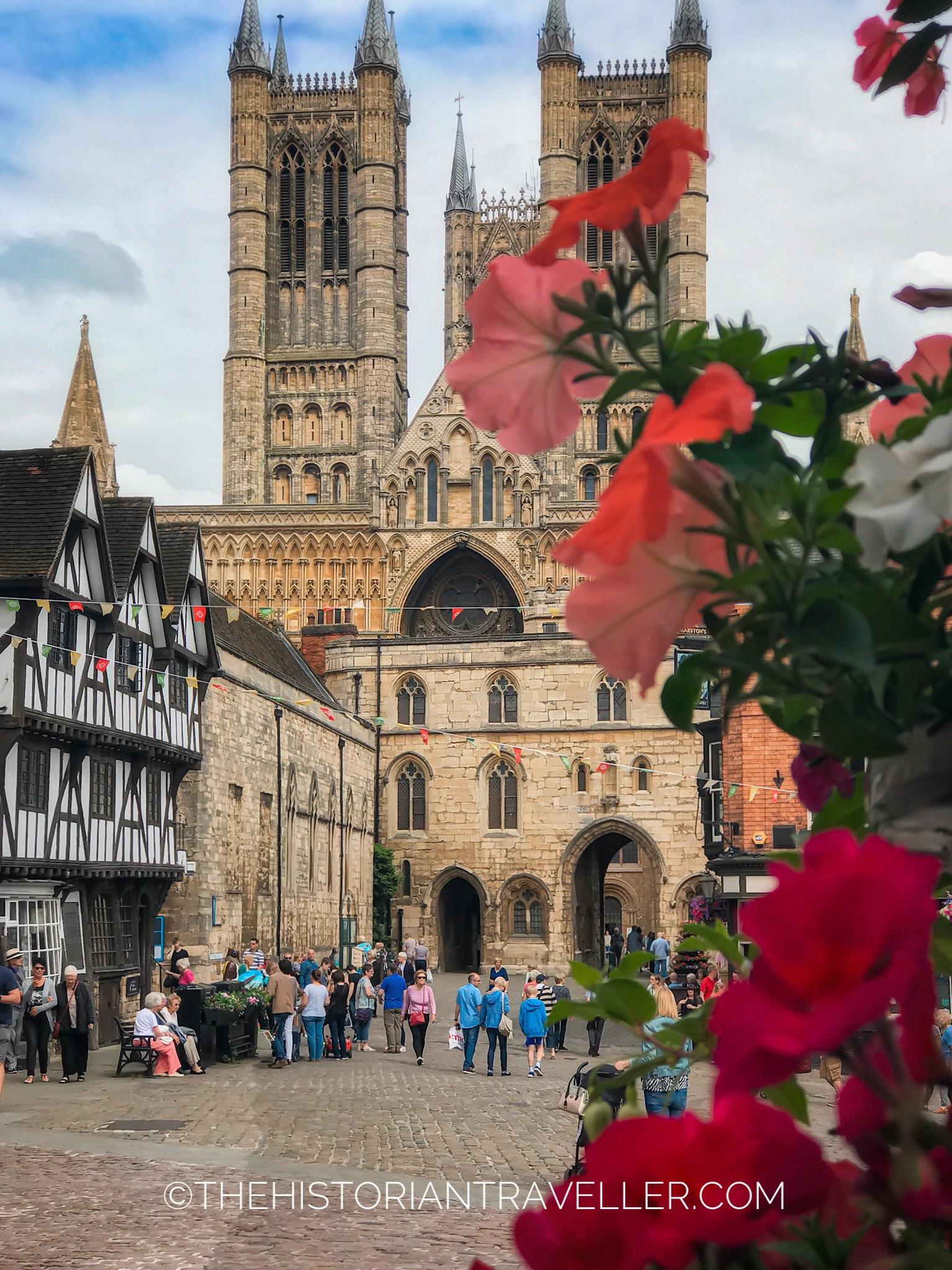
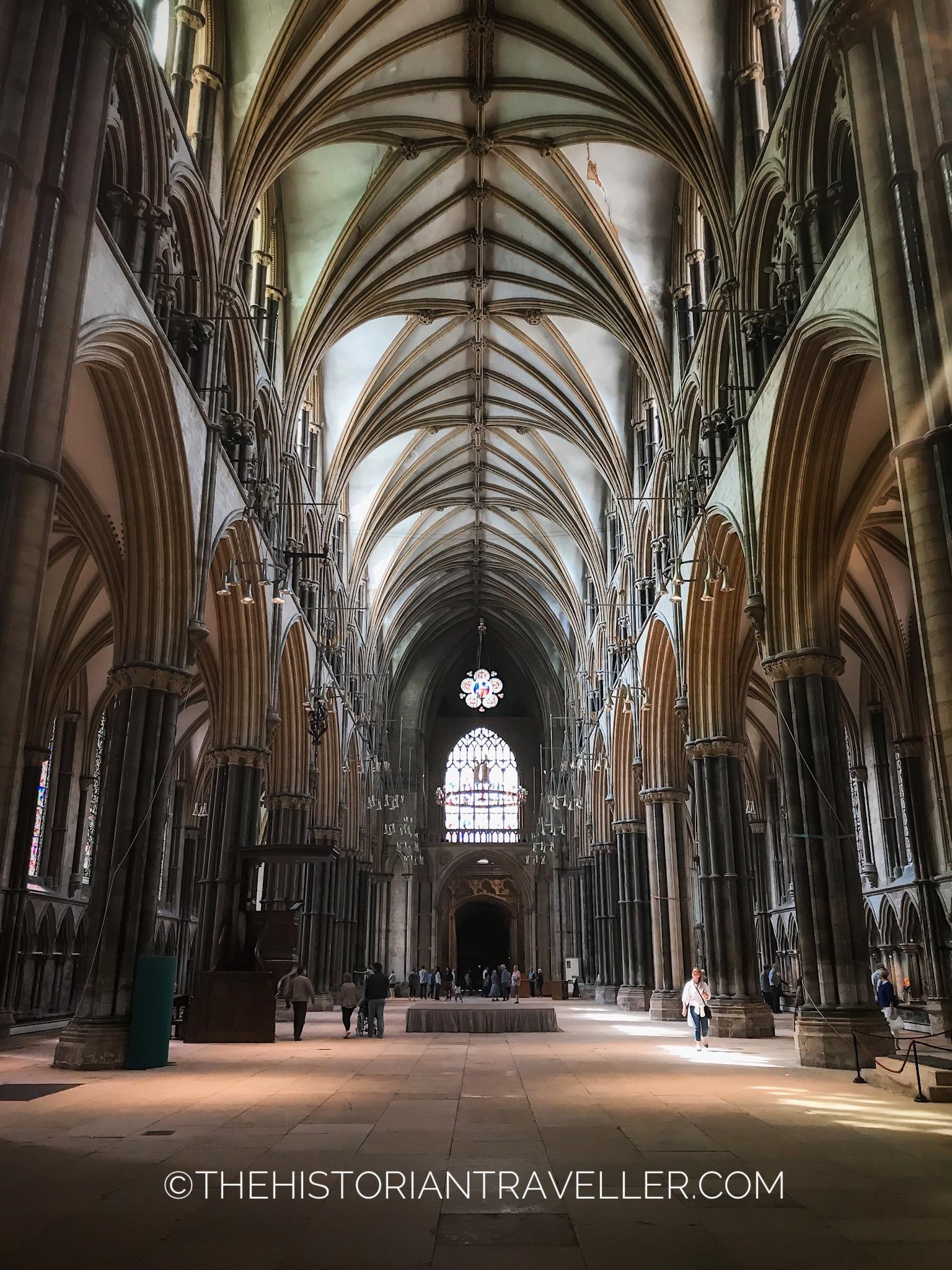
Lincoln Cathedral is one of the many medieval gems of the city. Founded in 1072 (completed in 1311), it’s built in Early Gothic style. If you read a bit of the history of Lincoln in the paragraph above, you already know the Cathedral was the tallest building in the world between 1311-1548. In fact, its spire elevated at 160 metres. Unfortunately, this collapsed in 1548 following an earthquake.
The Cathedral is also the fourth largest in the UK after Liverpool, St. Paul’s and York. For hundreds of years, the cathedral held one of the four remaining copies of the Magna Carta signed by the Bishop of Lincoln, Hugh of Wells. This was moved to the Castle vault for security reasons.
The Cathedral “crazy vaults”
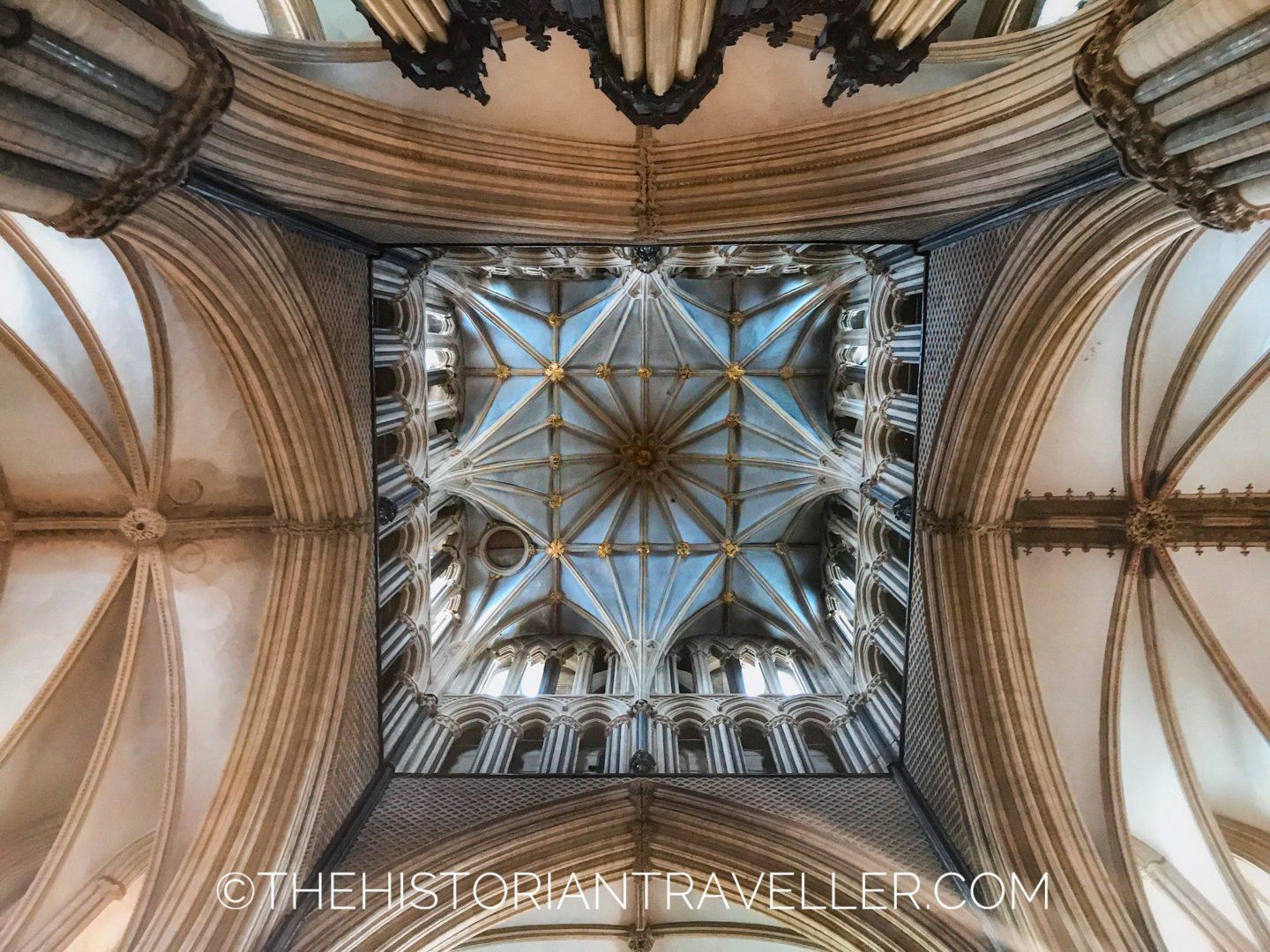
If you enter the Cathedral, look at the ceiling! In fact, among the main features of the building there are the “crazy vaults”. Original, experimental and almost kaleidoscopic vaults are a peculiar characteristic of the Lincoln Cathedral. I was very fascinated about their strangely unusual architecture as I don’t think I ever seen anything similar in other Gothic cathedrals.
The vaults’ architecture is attributed to the French-Normand master mason Goffery de Noiers who lived in the late 12th century. His architectural was very innovative and perhaps never seen in England before. The quadripartite vaulting was so offset to be defined “crazy vaulting”.
It’s incredible to think about that this genial work has been done hundreds of years ago!
Don’t skip the Medieval and Wren Libraries
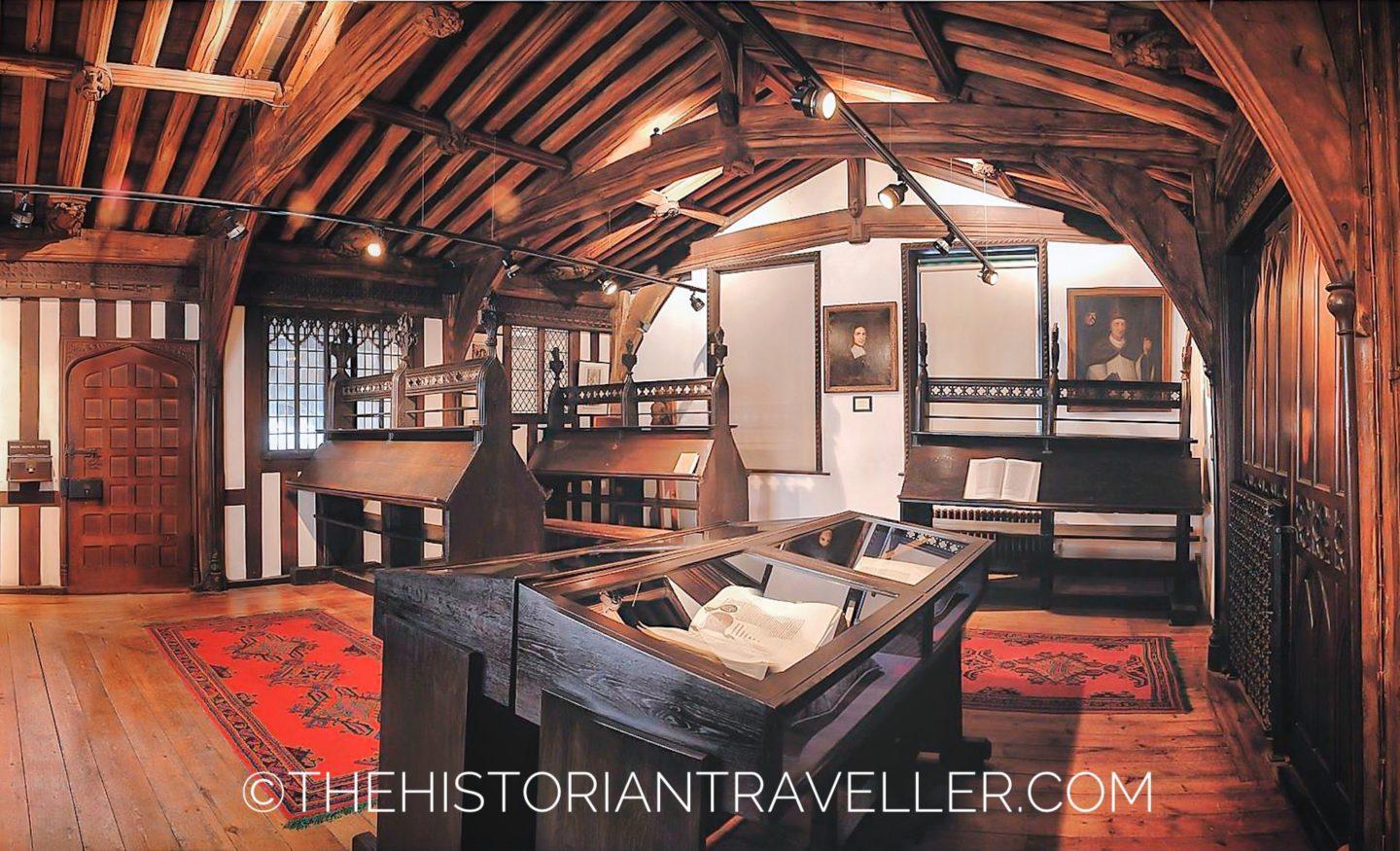
Don’t exit the cathedral without popping a visit to its two beautiful libraries! Many people skip them because they are hidden and not noticeable if you go around only in the Cathedral. However, if you go towards the cloister, you will notice a sign saying “Wren Library”. Follow it, you will see a little staircase going up in the cloister towards the libraries. Don’t worry if you see the door that look closed, you can enter for free.
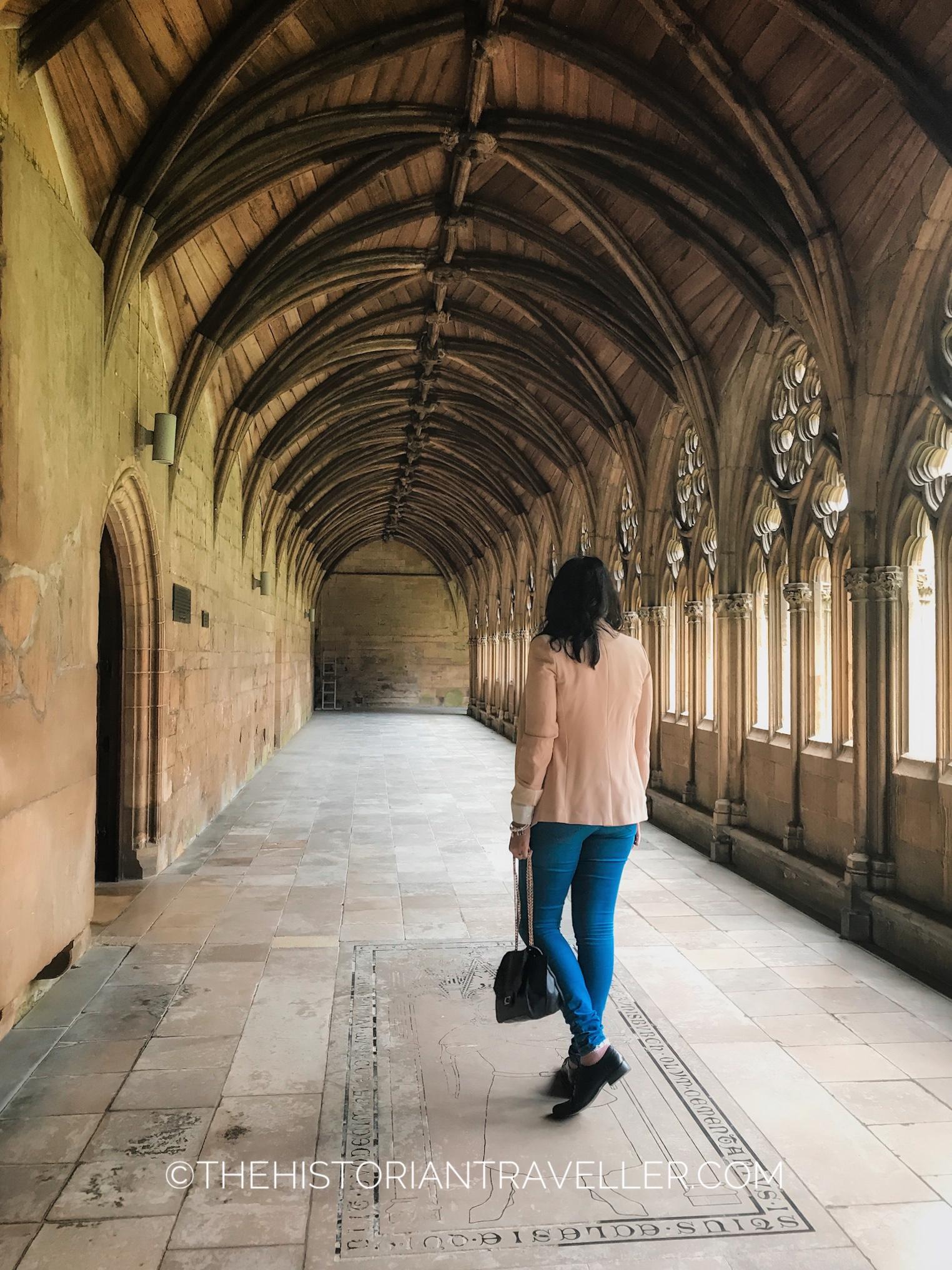
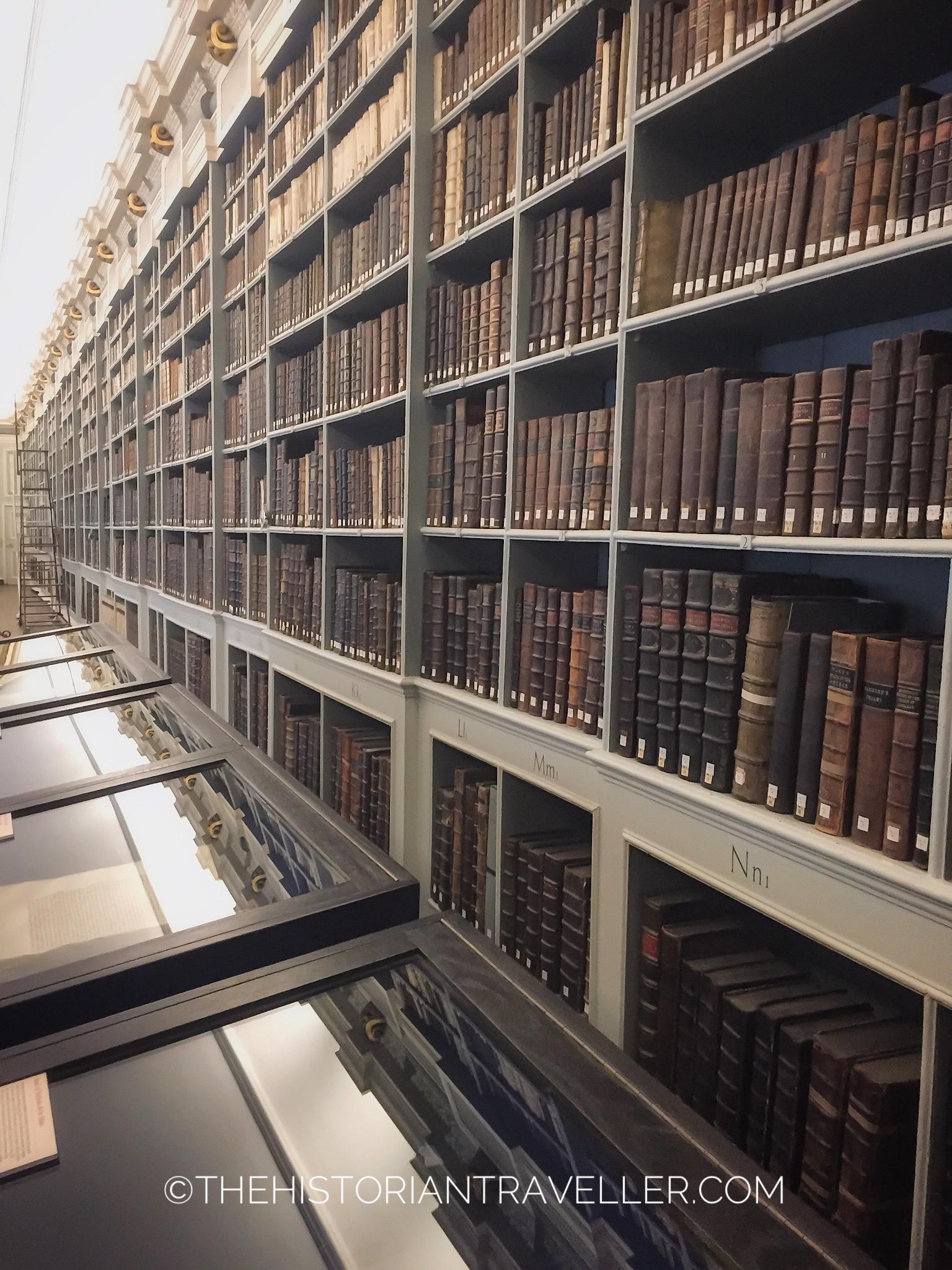
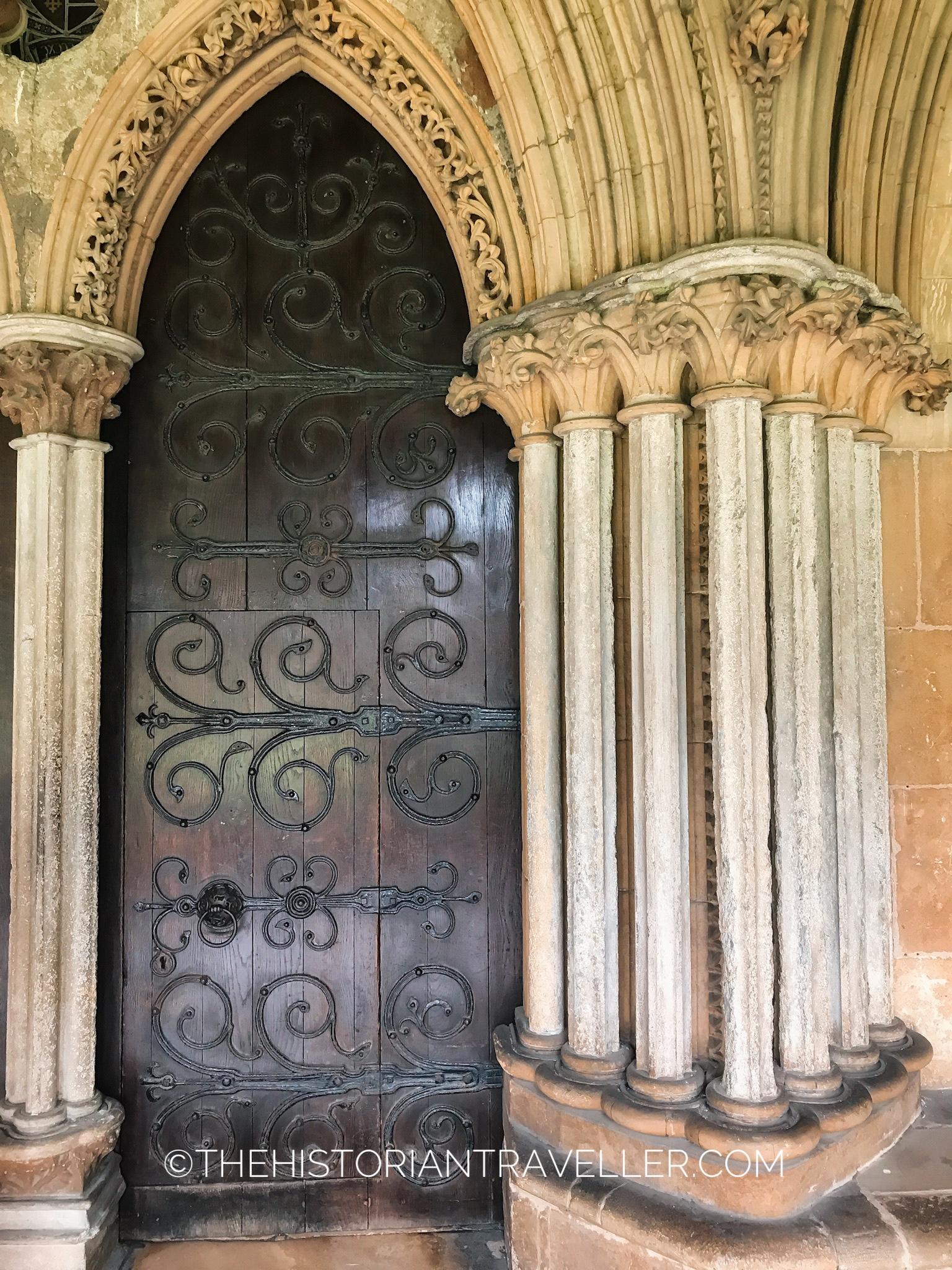
The first library you will find is the small 15th-century library. This was built as a chained library to host the Cathedral’s books collection and rare manuscripts. Many describe it as “the most beautiful room in England” because of its uniqueness. The library still features its original reading tables. Moreover, it preserves treasures like the Chaucer’s Canterbury Tales and the Thornton Manuscript.
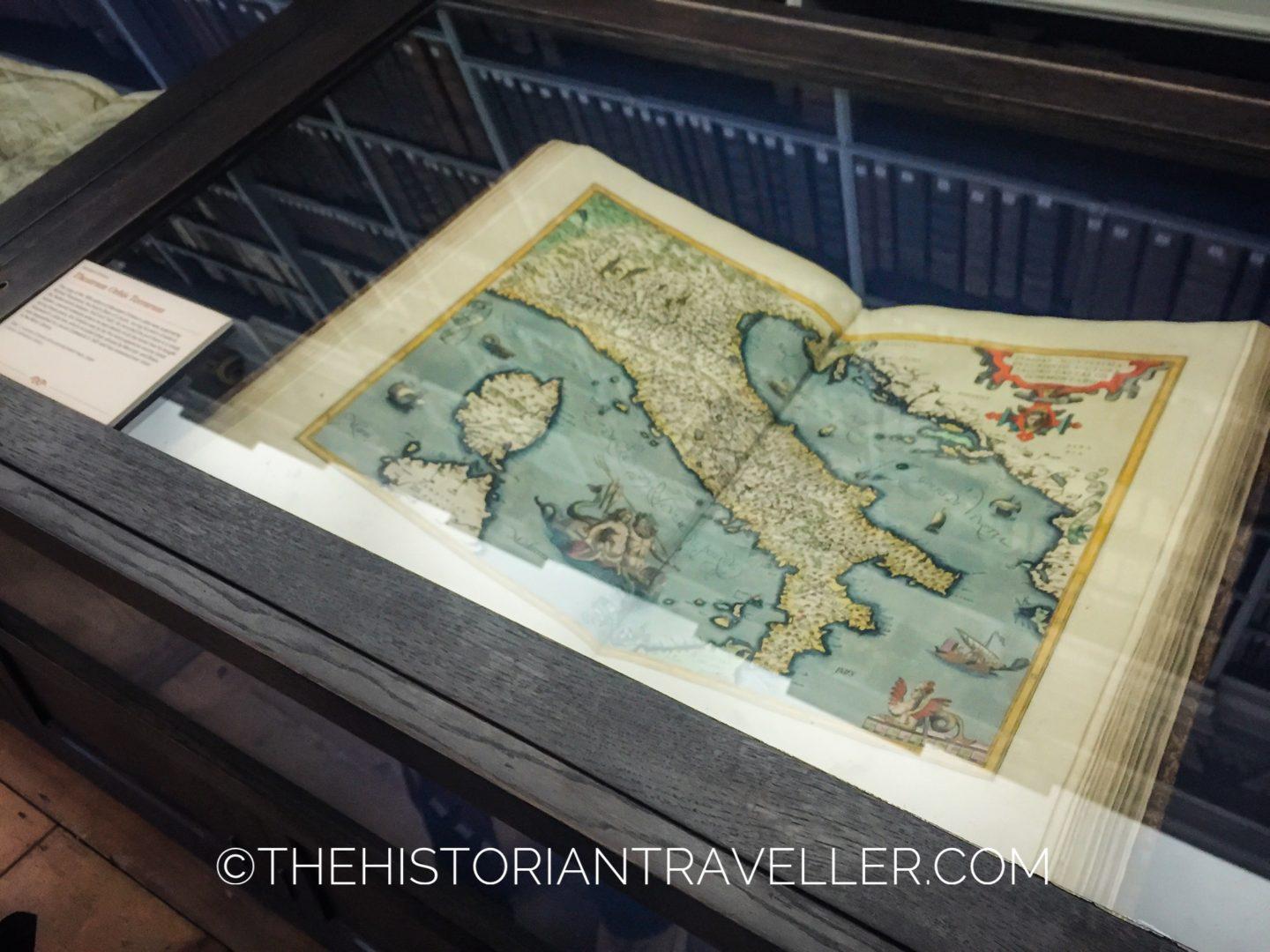
From the medieval library, you will see a small room going to another section. Here you’ll find the Wren Library. This has been commissioned by the Dean Michael Honywood to host part of the Cathedral’s early printed books and part of his collection. The library was built in the 17th century and includes also 120 incubula and books about history, geography and travel.
Hike the Lincoln’s Steep Hill
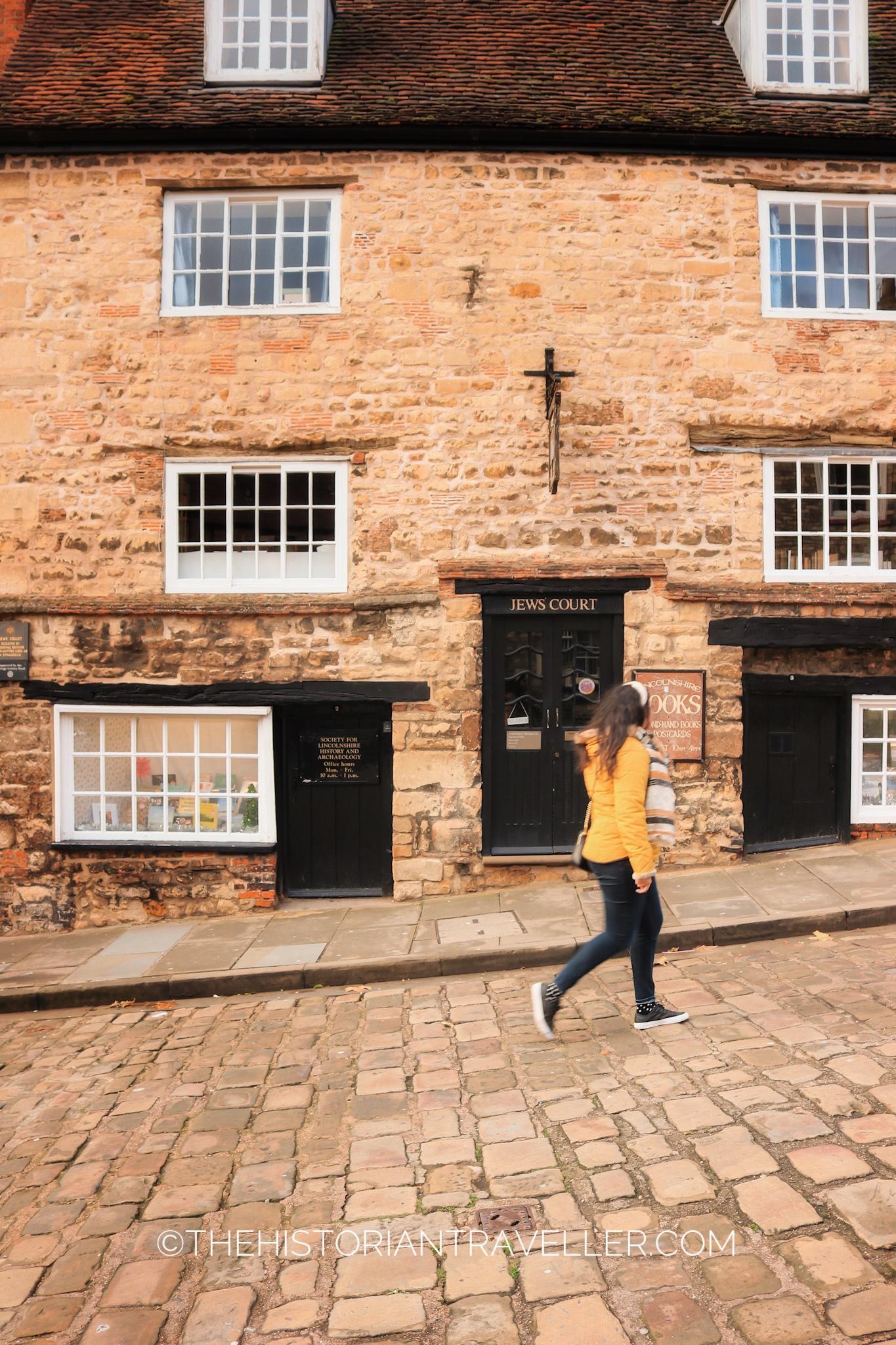
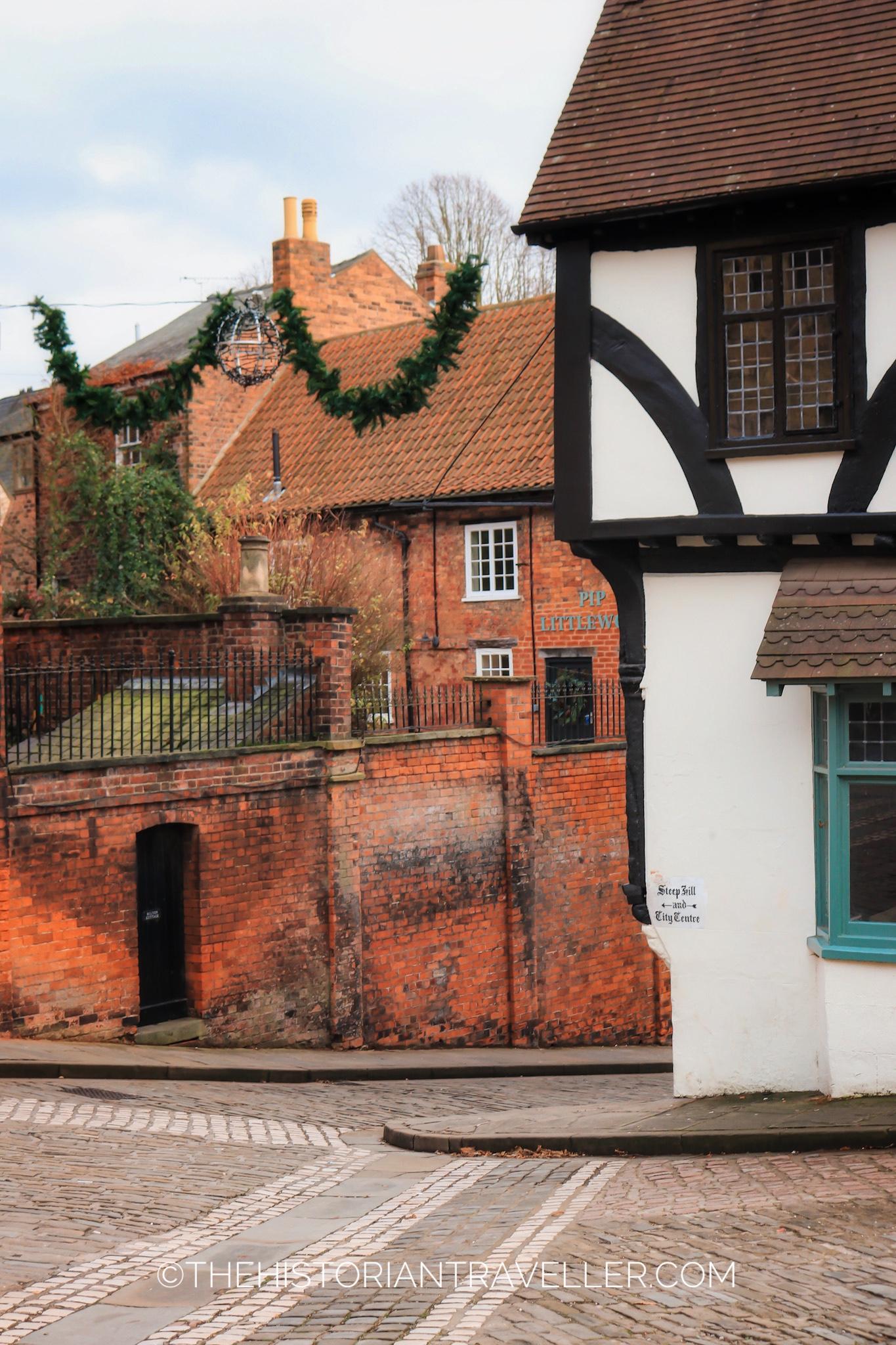
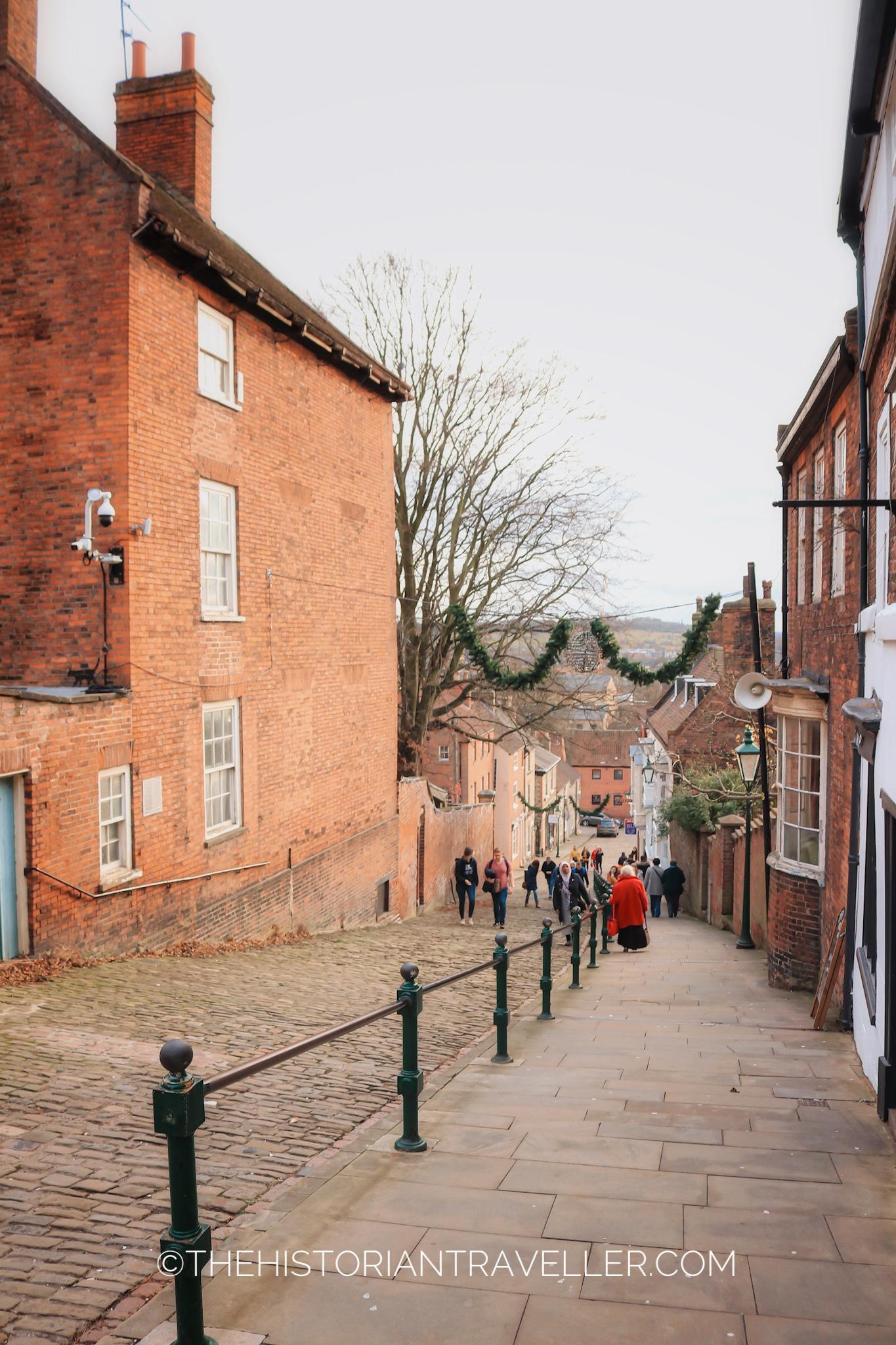
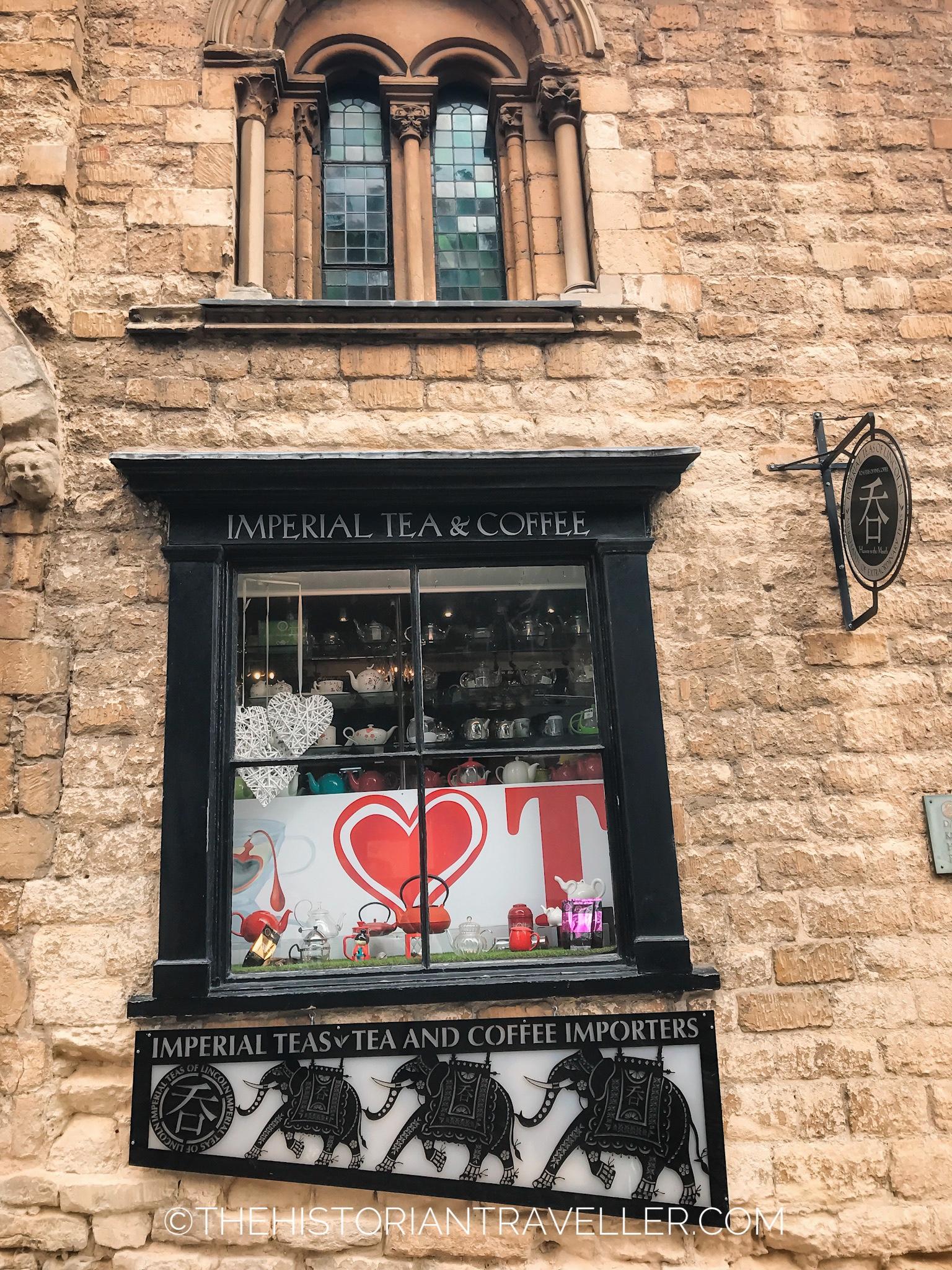
Steep Hill is probably one of the most famous historical streets in Lincoln. The construction of the street dates back to the 1st century and its former name was Ermine Street. Indeed, this was a section of the famous Roman road running from London to Lincoln and York. It has a length of 420 meters and goes from the Lincoln Cathedral (top) to Well Lane (bottom).
Things to do on Steep Hill
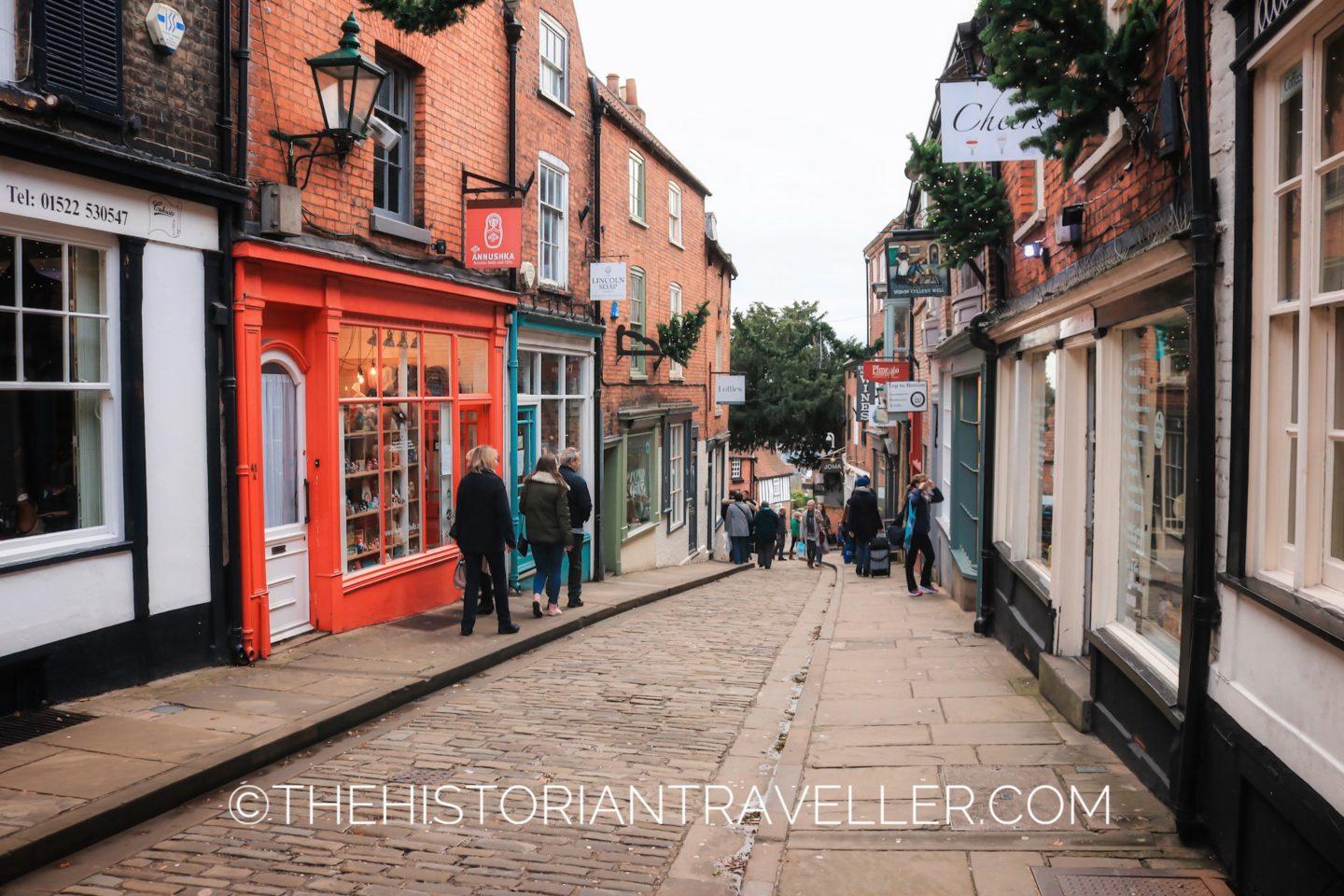
The street has now several shops, restaurants and historical buildings and it’s a must stop on your Lincoln itinerary. The steepest part of the street is unsuitable for any type of vehicle. Moreover, it’s not very stroller friendly or accessible to people with mobility issues. Indeed, Steep Hill is the fourth steepest street in the whole UK. You have to “climb” it on foot and it’s so steep that during snow days children like to slide from the top to the bottom.
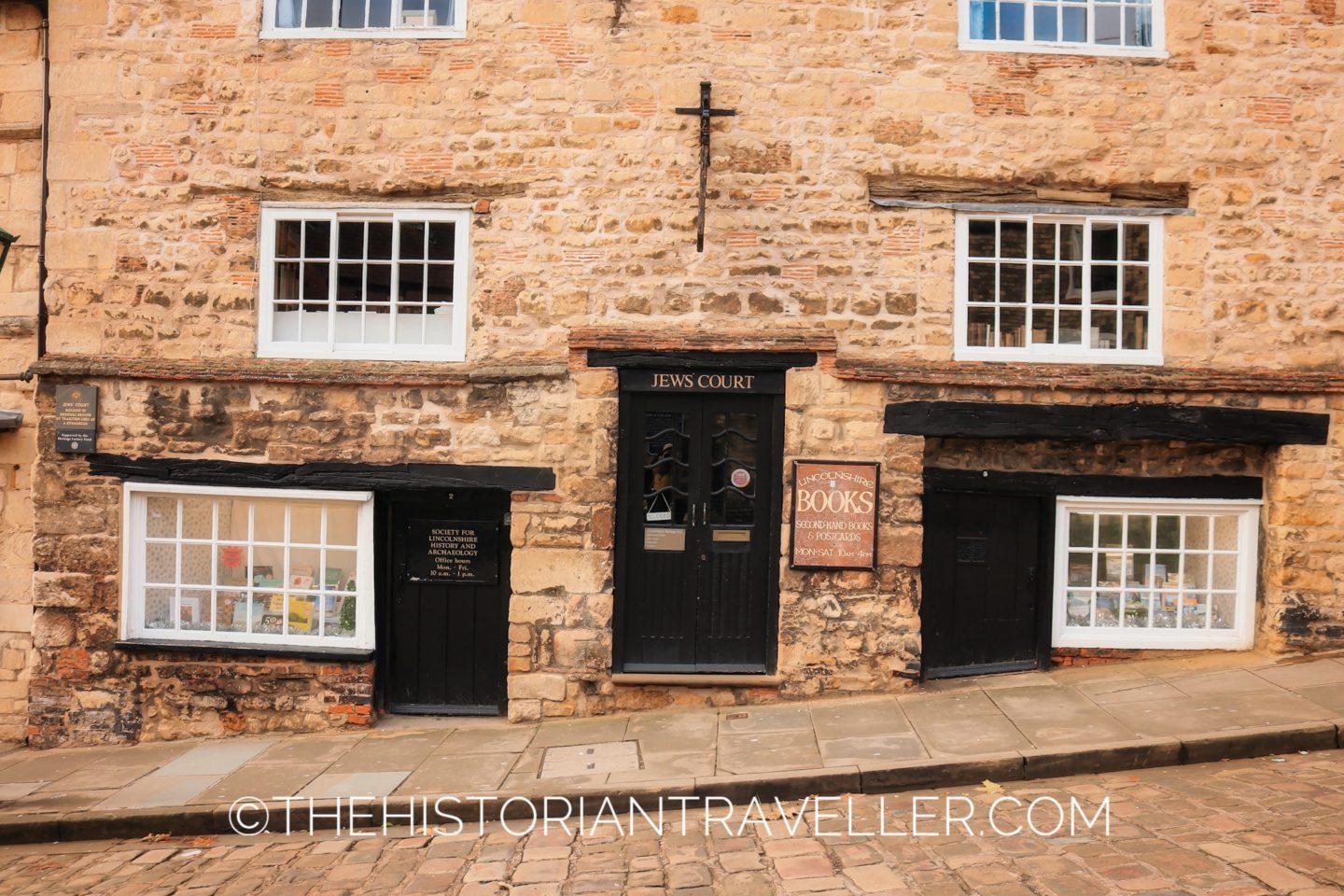
When visiting Steep Hill, don’t miss a stop to Harding House, a 15th- century building now used as an art-gallery. Moreover, if you go forward, you will see another building unique in its genre. This is called Norman House and it’s probably one of the oldest domestic buildings in the UK. Indeed, it dates back to the 12th century and still features its original arched doorway and window. The building is now converted into a tea shop and a small café in the semi-sunken undercroft. One of my favourite stops on Steep Hill is the Jews’ Court. This is a three-stoyered building dating back to 1170. it was the site of a medieval synagogue and important residence for the medieval Jewish community.
Now it is the headquarter of the Society for Lincolnshire History and Archaeology but it hosts also a lovely bookstore.
Discover other beautiful locations in the UK! Why not visit Robin Hood’s Bay?
Explore Lincoln’s high street
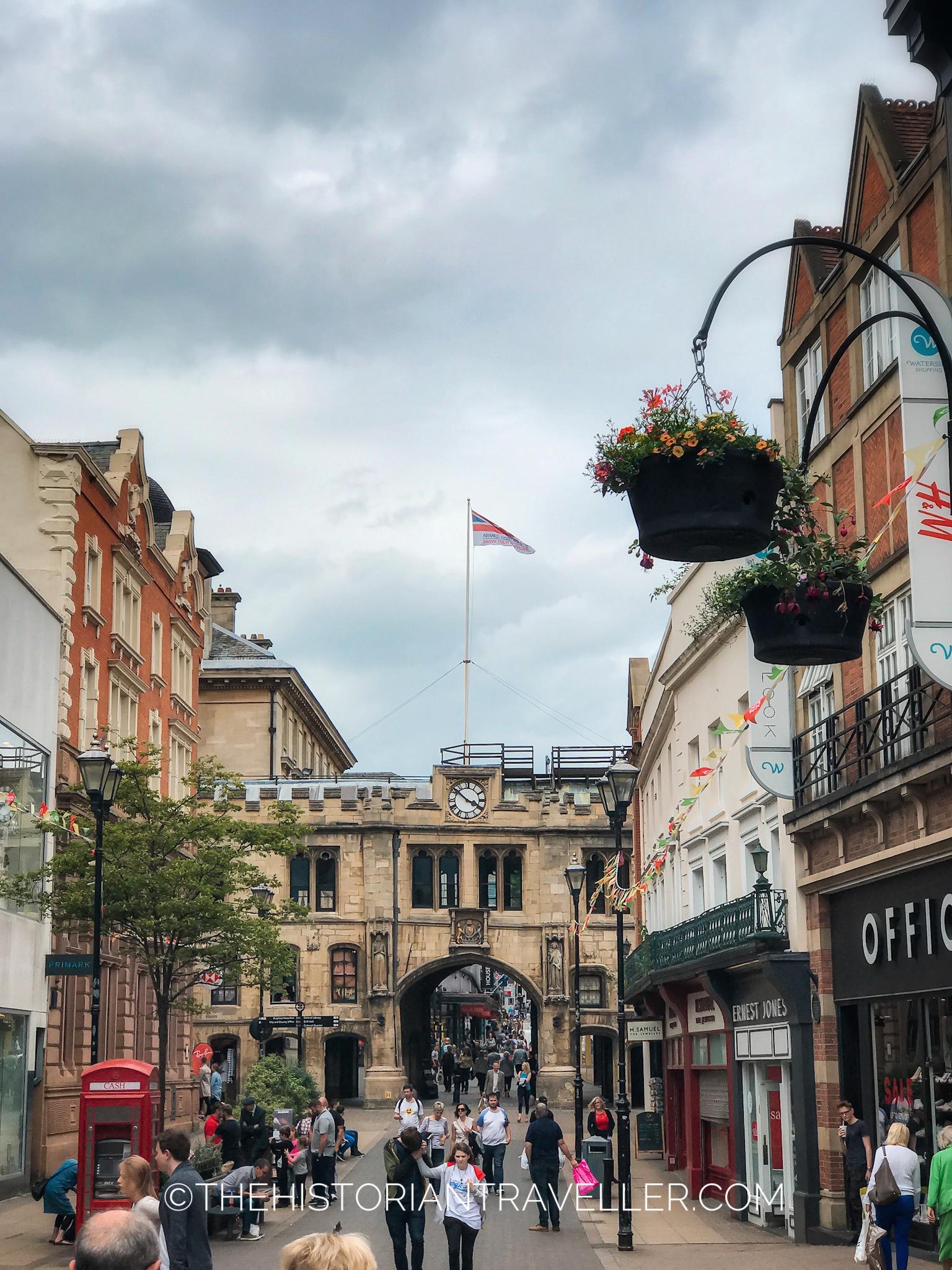
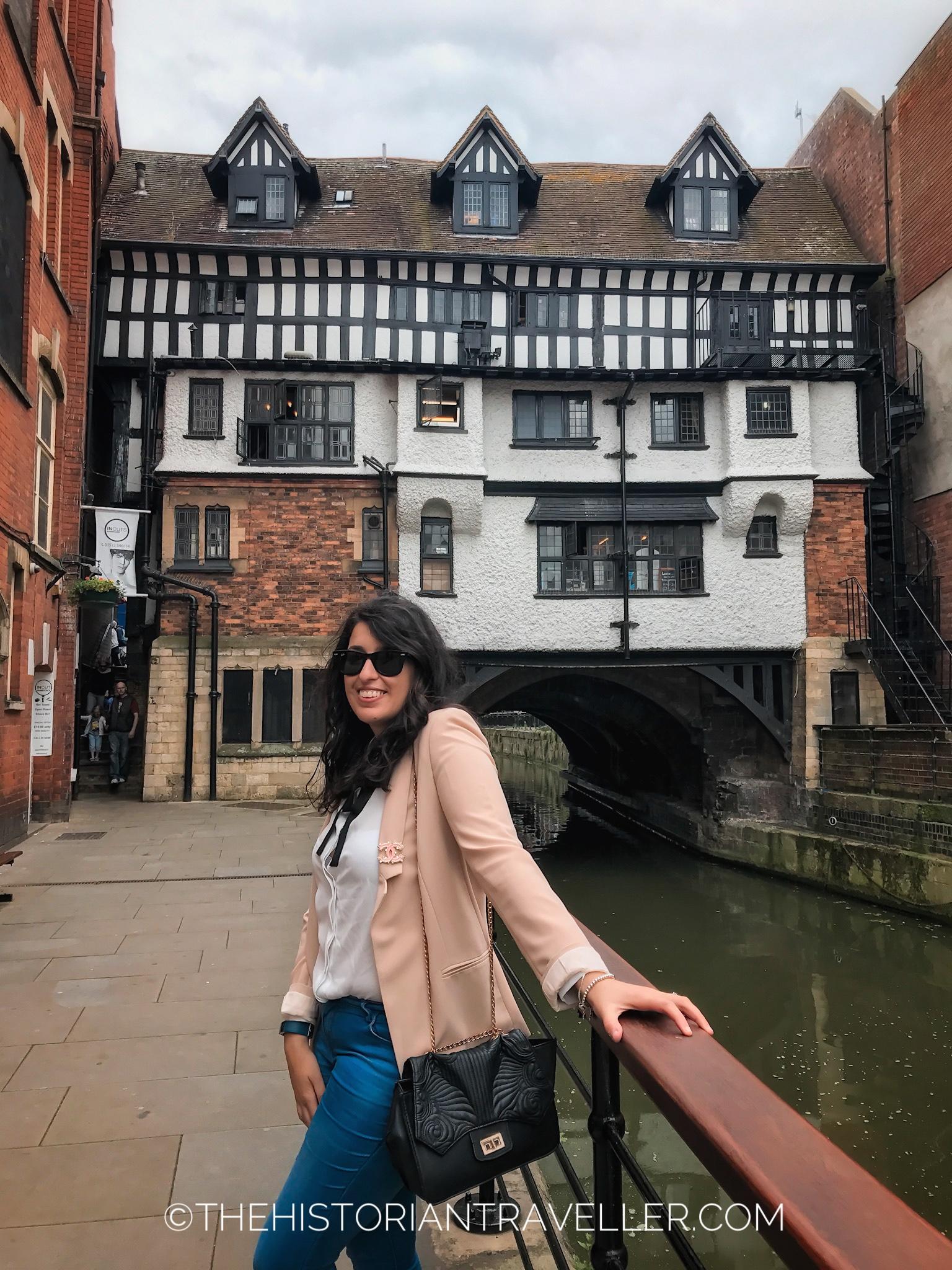
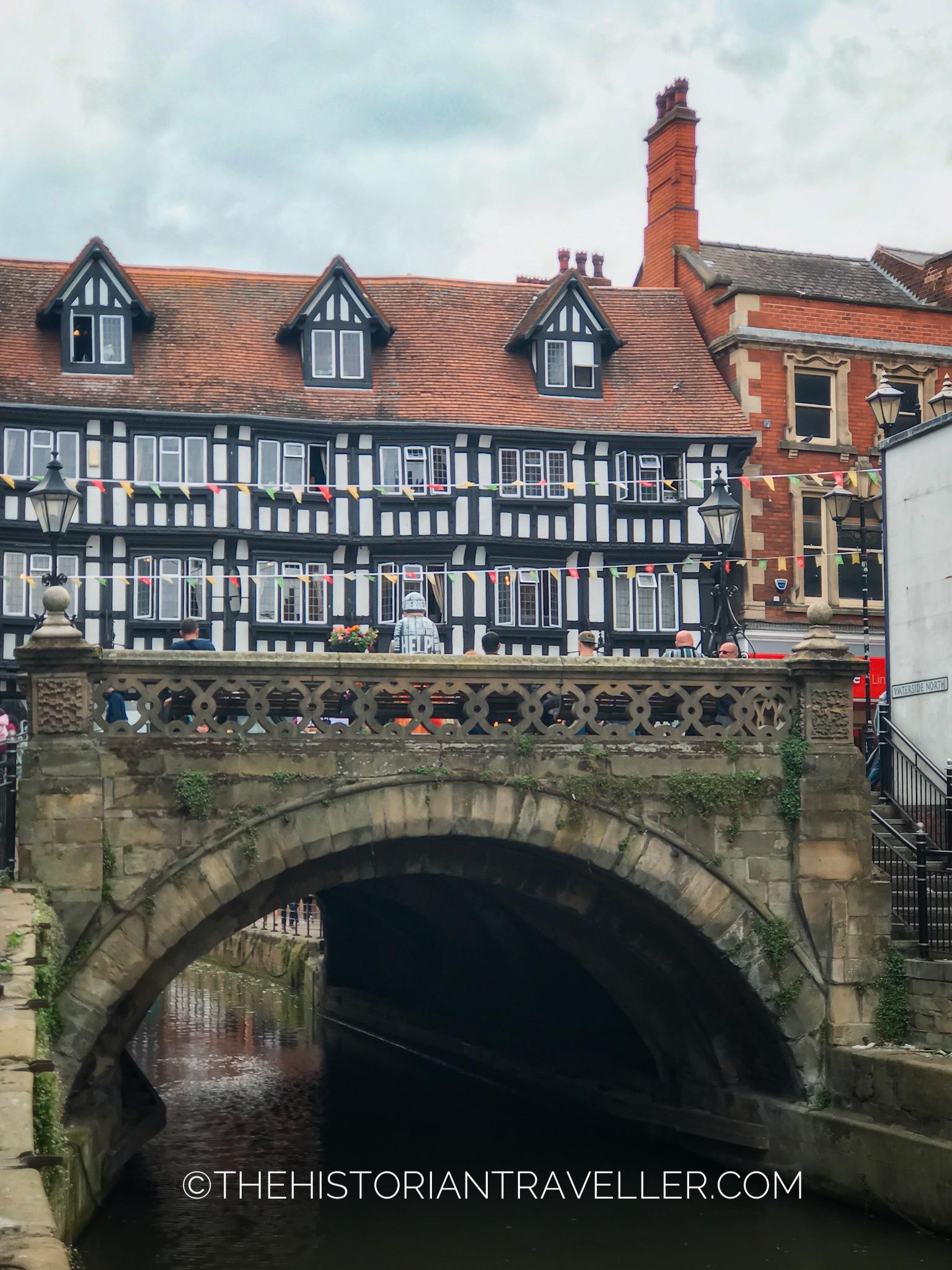
Lincoln’s High Street is considered by many the place where you go “shopping”. This is partially true as the street has many of the most important restaurants and shops of the city. Nevertheless, High Street, together with Steep Hill, is one of the most important historical routes of Lincoln. In fact, in addition to the numerous shops, you can check also some iconic historical landmarks.
Historically, High Street was part of the Roman road Ermine Street. Now, it goes from The Strait to the St. Catherine’s area for a length of 1.5 miles. The street features about 30 historically listed buildings.
Top Historical landmarks to see on High Street
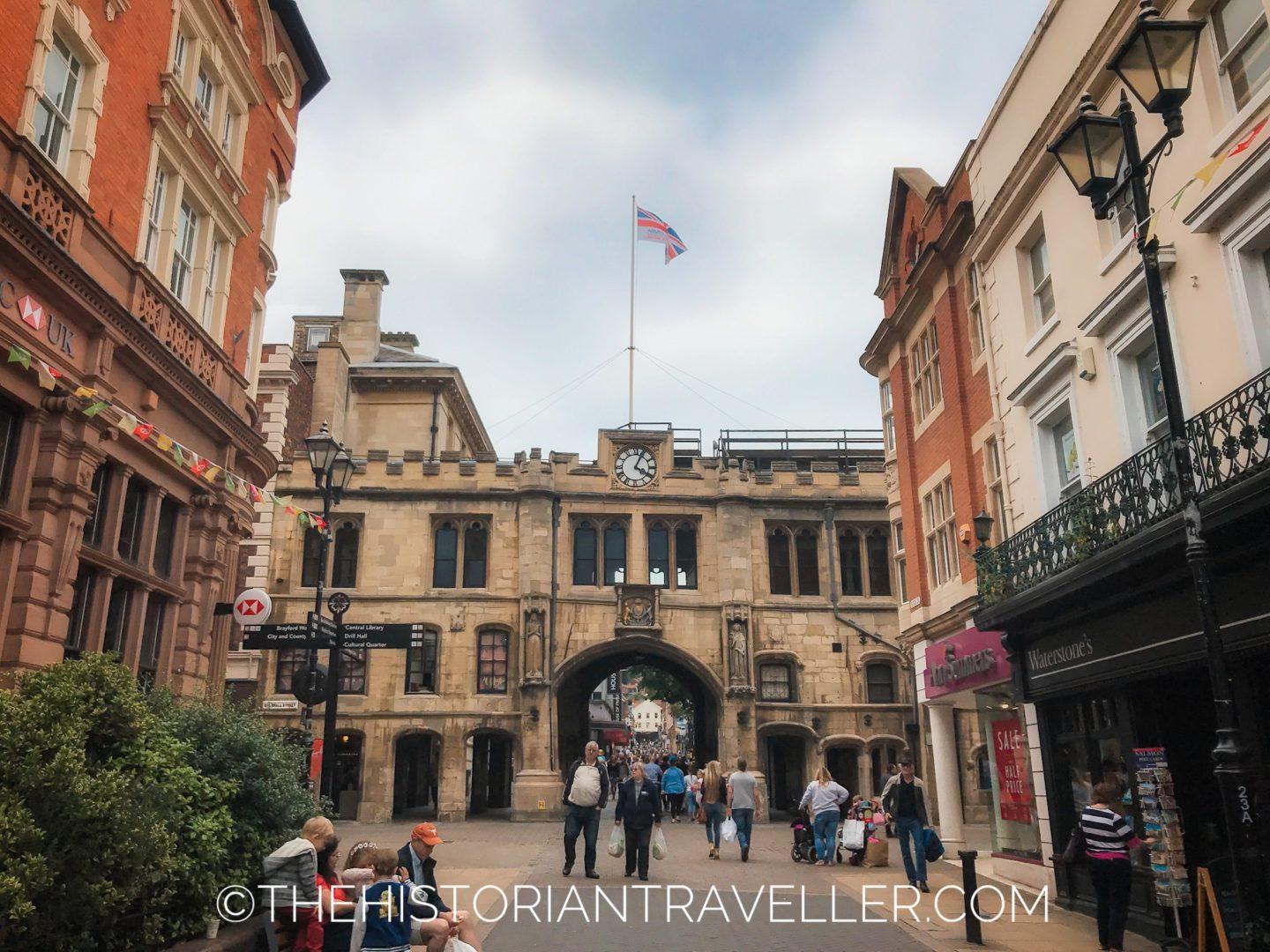
Stonebow and Guildhall
While walking on High Street you will certainly pass through the famous gate Stonebow and Guildhall (pictured above). The present building dates back to 1520 but it was built over a former Roman gate. It looks like the name Stonebow comes from the Scandinavian word “stennibogi” meaning “stone arch”. In this regard, archaeologists agree that when the Vikings arrived in Lincoln, there was a stone arch in this point. This was destroyed in the Middle Ages and rebuilt several times until it reached the current appearance. The Guildhall section of the building was the administrative office of Lincoln city for many centuries. Now, it hosts several historical insignia like the sword of Richard II and the Posy Ring. The entrance is free.
The Glory Hole
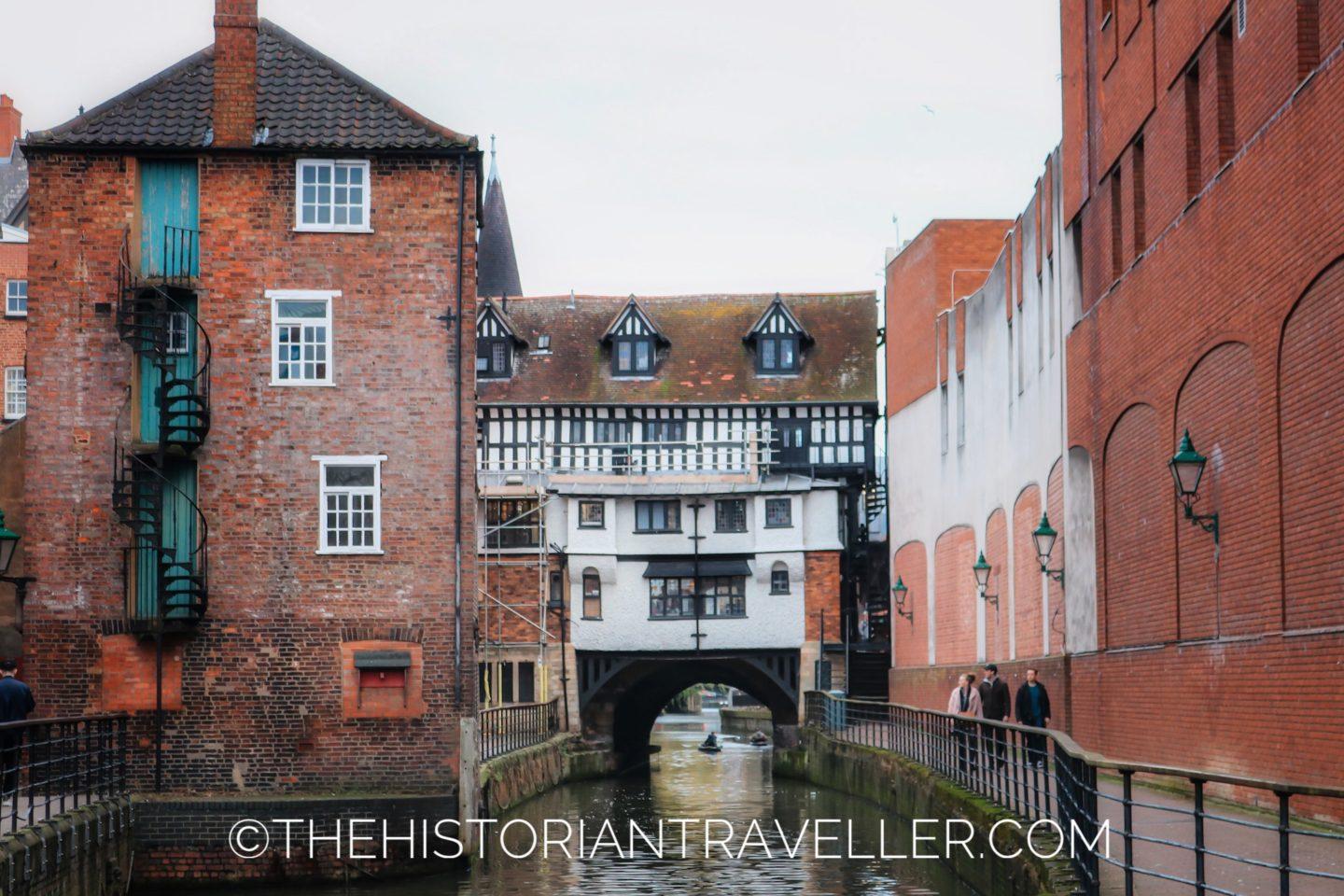
One of my favourite historical gems in Lincoln is a place known as “The Glory Hole“. This is a bit tricky to find if you don’t know where to look and many tourists probably don’t know it existence. The building’s official name is “High Bridge” and you will probably notice it while walking on High Street for its traditional half-timbered architecture dating 1160 AD. The structure currently hosts the Stokes High Bridge Cafe. The “hidden” part is actually behind the building. In fact, if you go near the entrance of the cafe, you will notice a little dark alley with a staircase going towards the river. If you descend the staircase (don’t worry it doesn’t lead anywhere risky) you will find yourself behind the building and you will see the “Glory Hole”.
This is the wooden little bridge supporting the medieval building. It’s quite a famous bridge. In fact, surviving the test of time despite flooding, demolitions and change of power it was once known with the name “Murder Hole”. The infamous name came from its location connected to numerous bodies washed away in the Witham river during the Middle Ages.
Follow the Roman trail
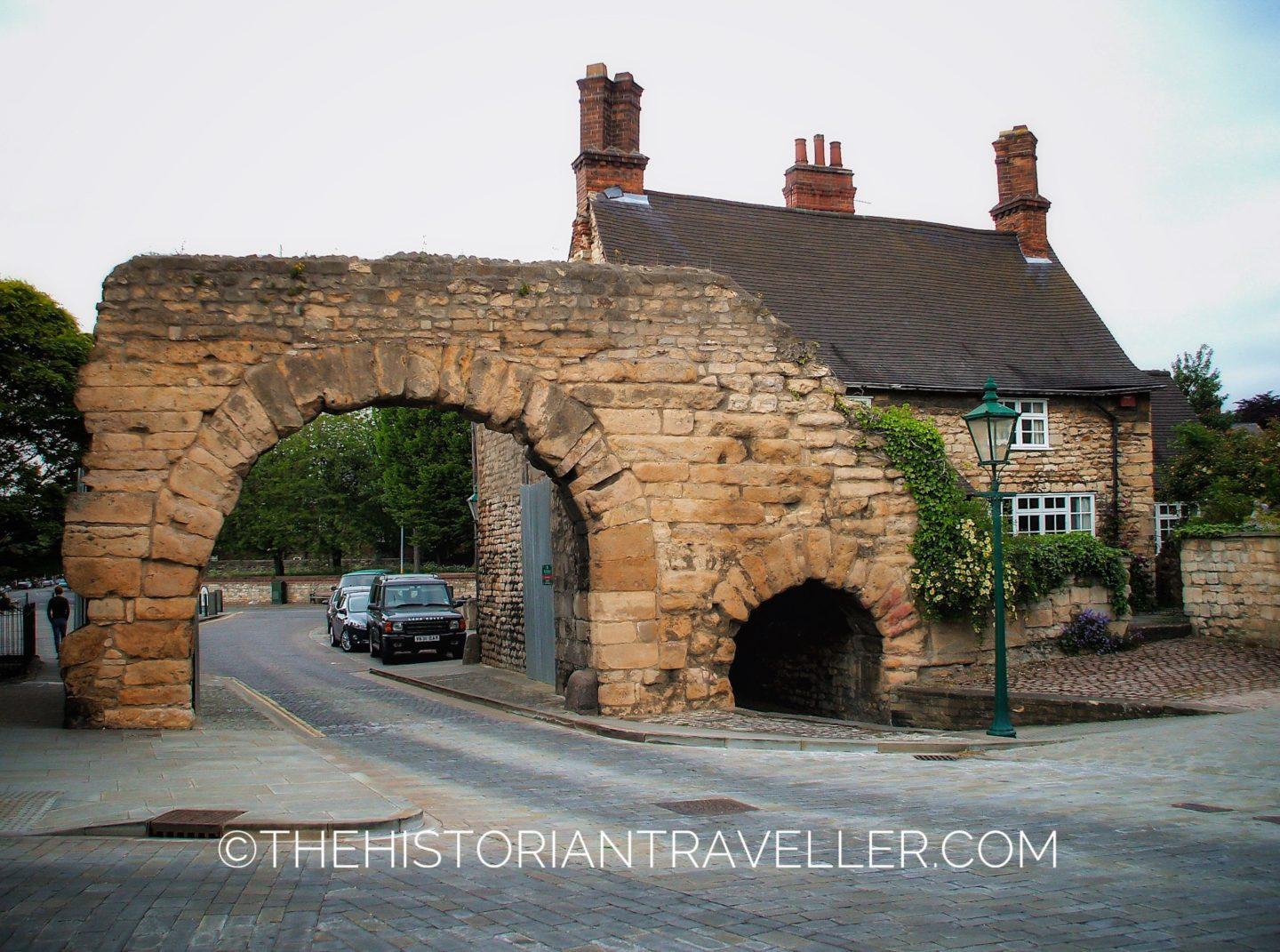
Lincoln contains the vast majority of Roman monuments in the UK. You just need to get around for five minutes to find the ruins of walls, columns and even perfectly preserved Roman tombstones. Of course, you should not expect to find big archaeological sites like those in Rome or Amman. This doesn’t mean the remains of Roman Lindum are less important.
One of the best preserved Roman monument is the Newport Arch. This dates back to the 3rd century and it’s the oldest arch in the United Kindom still used by traffic. It is located in the historical neighbourhood of Bailgate. Here, you will find also some other Roman ruins like the Mint Wall, the Forum Well and part of the defensive walls of Lindum Colonia.
If you are interested in following the complete Roman Trail, Visit Lincoln has an interesting interactive itinerary you can use to discover all the hidden Roman ruins in the city.
Where to eat in Lincoln
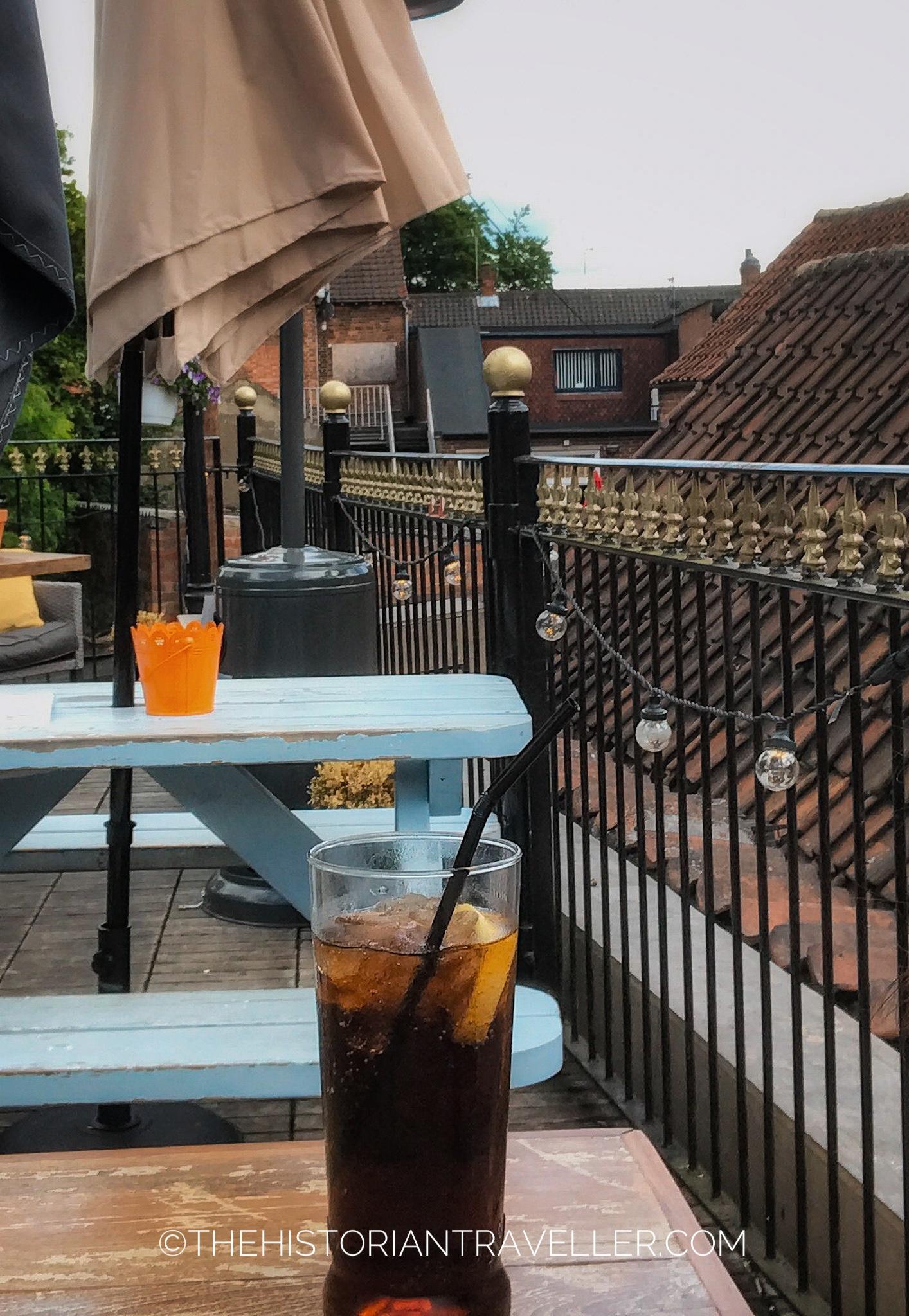

Lincoln is literally full of places where to dine. Most of them are little family-run restaurants and it’s very nice to discover them! Nevertheless, one of my favourite place that I keep returning across the years is The Citadel (previously called Cloud Bar). I love this place because of its lovely terrace with a back view on the Cathedral. Moreover, it’s a bit out of the city centre, so it’s much quieter than other restaurants. However, if you want to visit, is better to book in advance because the terrace is a bit small and you may not find a space. Especially during spring/summer.
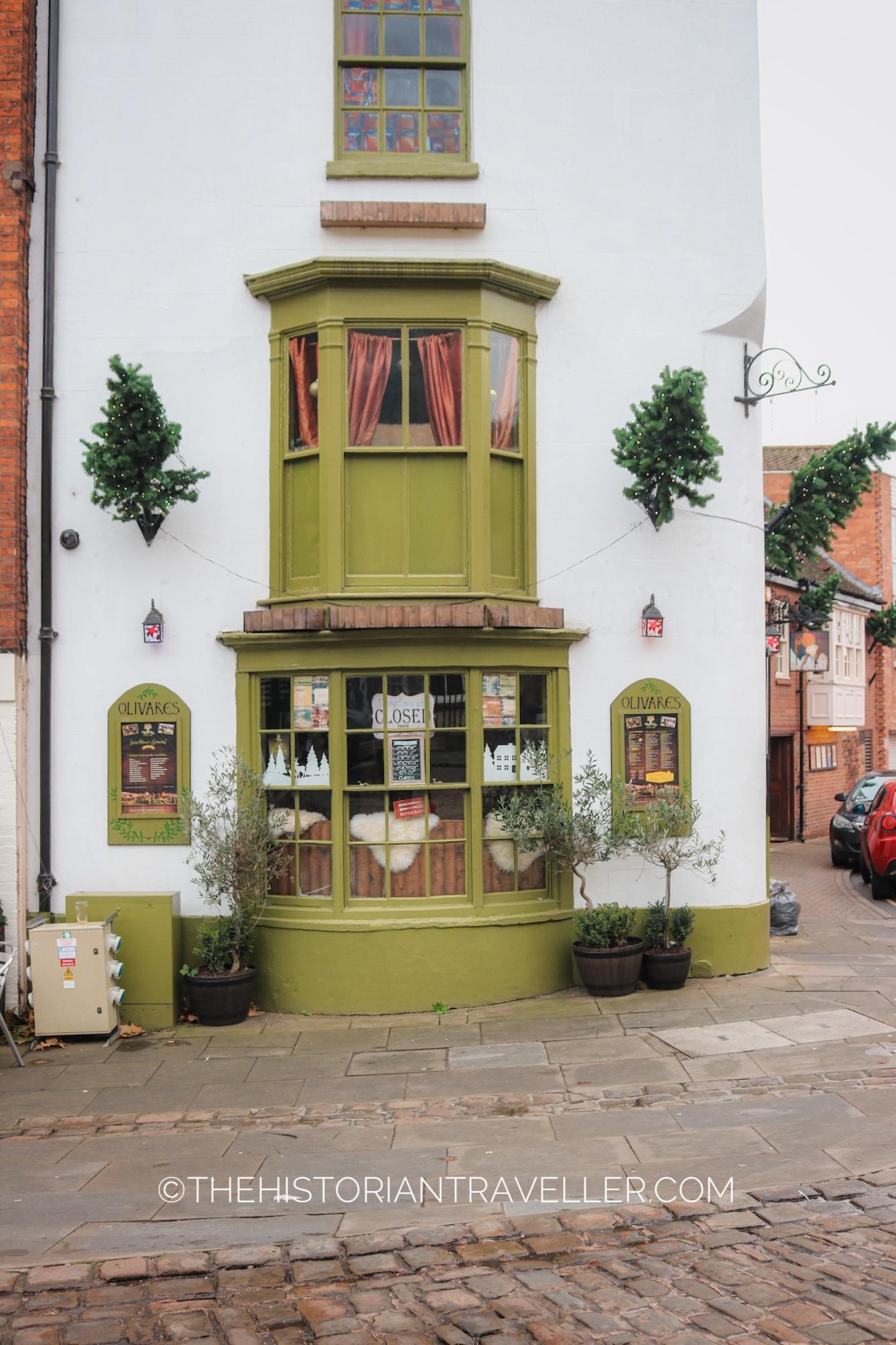
Another lovely place where to eat with the view of both the Castle and the Cathedral is Olivares Tapas Bar. This place is serving authentic Spanish food and I love its wooden interiors! Unfortunately, the last time we went, it was a bit late and it was closed. Moreover, during summer it’s quite crowded and most tables are outside. So, it’s always better to book in advance. Lastly, a place I wanted to visit so much but I never been lucky enough to find it open is The Cheese Society. As the name suggests, this place serves a lot of dishes with different variety of cheese. Unfortunately, it’s open only on specific days and times of the week. Ergo, before planning a visit check their opening times on the website.
Where to stay in Lincoln
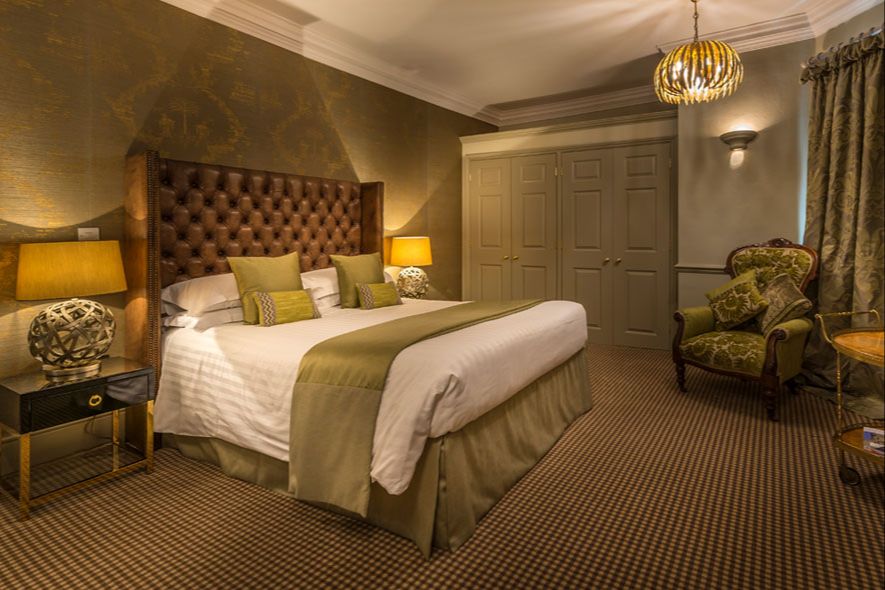
Personally, I never needed to book an overnight stay in Lincoln because I always lived near enough to go back and forward with my car or train. However, if I had to choose a place to stay I would probably chose an historical accommodation. One of my favourites in this regards would be the Washingbourough Hall Hotel. This is a 16th-century house belonged to the Fairfax family. Prices are a bit expensive compared to other mid-range hotels in the area ranging between £219-275 per night for two people.
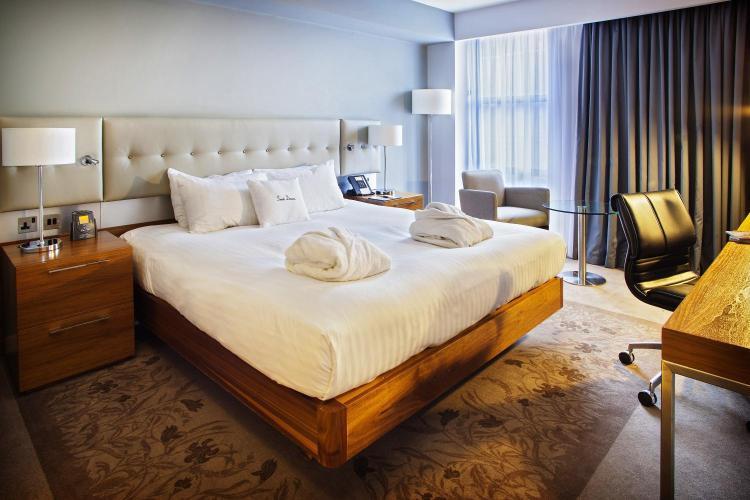
If you prefer to stay in a cheaper place but without loosing in quality, one of the most rated places is the DoubleTree by Hilton Hotel Lincoln. This is located in the former site of the City of Lincoln Electricity Works, by Brayford Pool marina. It is at a walking distance from Lincoln city centre and prices range between £94-189 per night for two people.
Happy travels!
Plan your trip to the UK


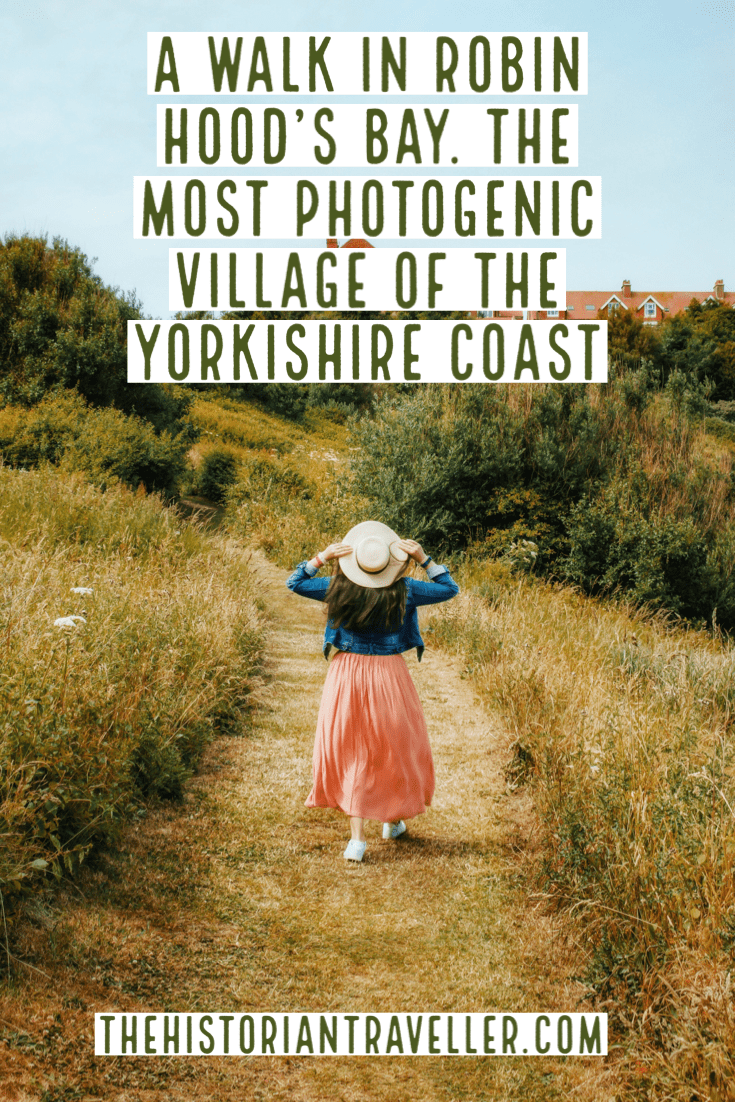


No time to read? Pin it for later!
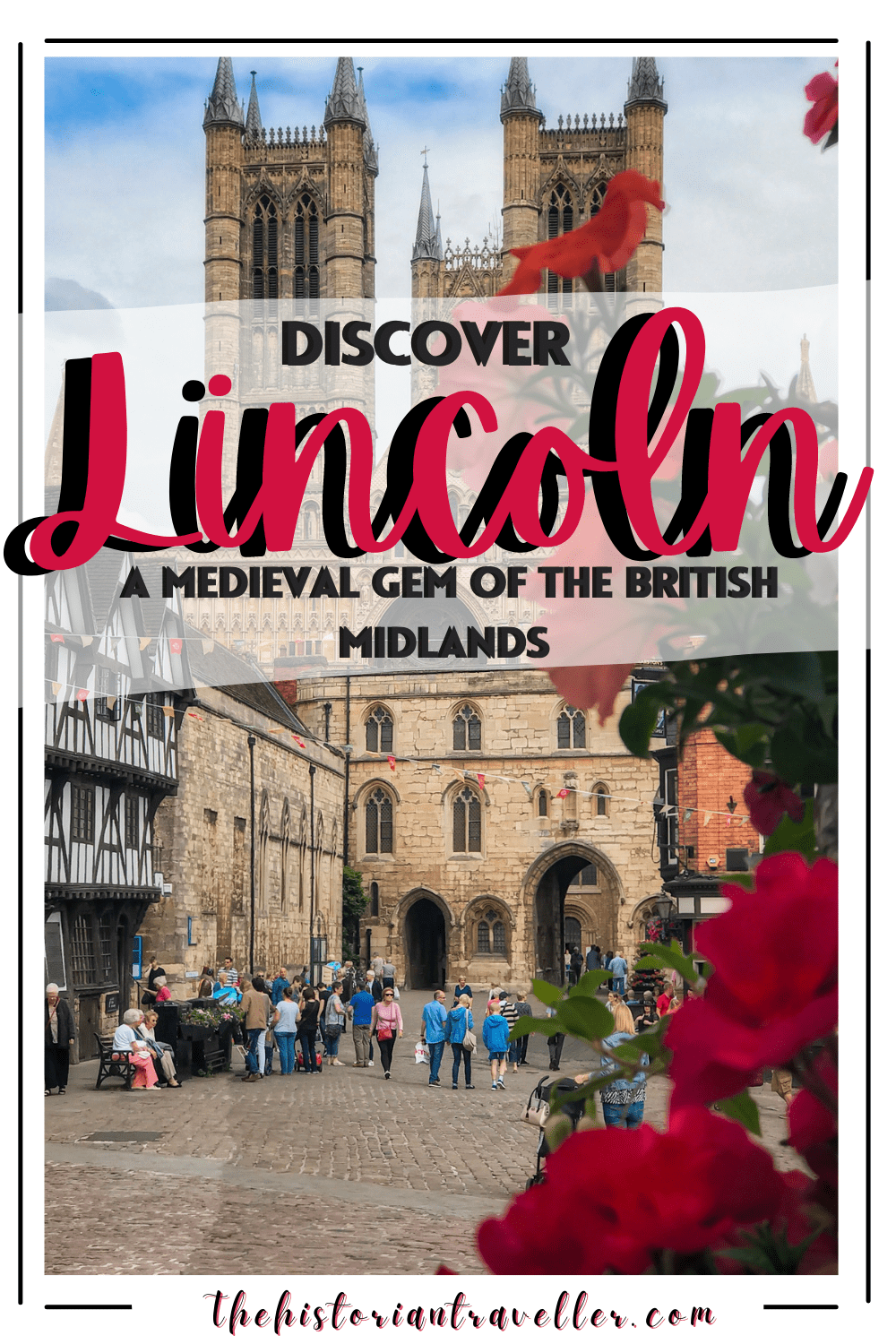

Ah I love Lincoln! I’ve visited a few times but only on super short trips – I really need to spend more time there on my next visit and explore properly. I had no idea they had a Victorian prison! That looks like such an interesting place to visit! Thanks for the great guide!
Author
Yes! The Victorian Prison is quite interesting, especially if you go during the Steampunk Festival!
I’m all about history so would to explore the medieval city of Lincoln. This will serve as a great resource when I visit England in September.
Author
I hope you will visit! Lincoln is such an underrated destination but I think is one of the nicest cities in the UK!
Looks beautiful! Great Post!
Author
Thanks for reading it!